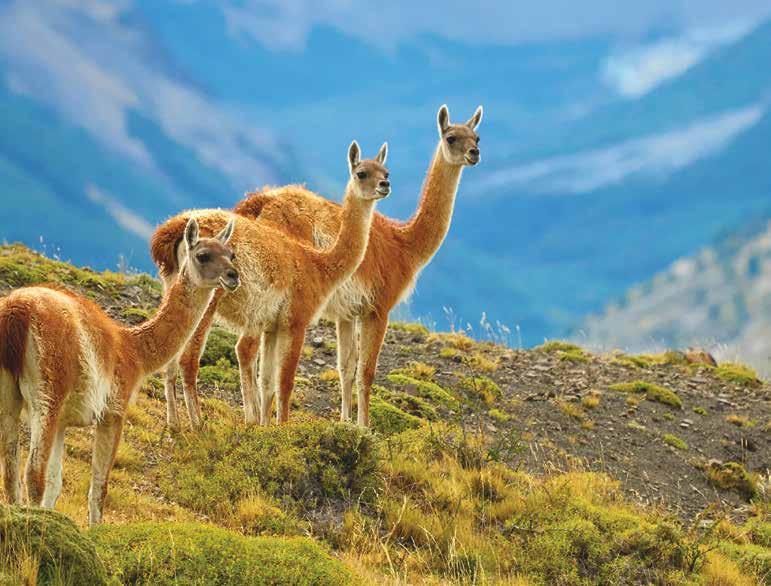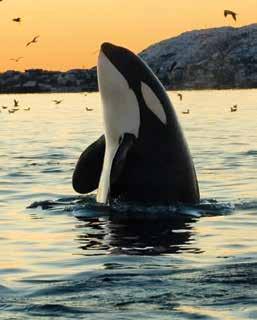Polar voyages

Unforgettable experiences | Expert knowledge | Small ships | Responsible at heart


Unforgettable experiences | Expert knowledge | Small ships | Responsible at heart
Your journey to some of our planet’s true wildernesses starts the moment you flip the first page of this Polar voyages brochure – welcome!
As the greatest explorers would re-affirm, there is a huge amount of planning and preparation that comes before any expedition to the icy ends of the Earth, where polar bears roam, whales feed and age-old communities thrive in the frozen wilderness. Our team of experts take care of the details, from selecting state-of-the-art ships that can cut through the ice, to curating extraordinary itineraries that show these frozen worlds at their best.
This year, we’re introducing some brand-new trips that offer new ways of experiencing these unforgettable places – from spellbinding classic expeditions that follow in the footsteps of the Golden Age explorers to a chance to see a solar eclipse in the near-endless daylight.
In this brochure, you’ll hear tales of the great pioneering women whose stories are lesser known than their male counterparts but are equally inspiring. Among them are women who have shown incredible resilience against all odds, and scientists who have enhanced our understanding of the natural world. Work like theirs is still ongoing and on page 8 you’ll learn more about how you can get involved in this crucial work through Citizen Science. You’ll also find our wildlife calendar on page 26, which might sway your decision on where to venture next!
Our team of Polar experts are on hand to help you plan your perfect Polar adventure.
Vanessa Fowler Polar Programme Manager


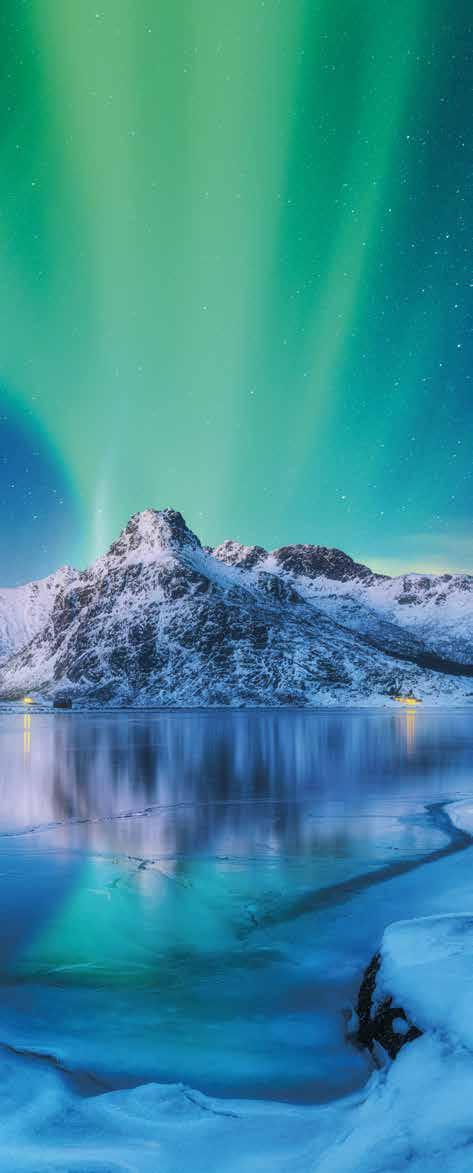

We offer a whole range of Polar voyages and, whether you choose the Arctic or Antarctica, it’s sure to be one of the most awe-inspiring and rewarding journeys you’ll ever make. Travelling on small ships accompanied by an expert team, you’ll find yourself totally immersed in the wildlife and wilderness of these extraordinary destinations.

Our aim is to maximise your time immersed in these amazing landscapes and seeing wildlife up close. Excellent Zodiac boat operations make it as quick and easy as possible to get on and off the ship. Most of our trips offer a choice of walks on the landings and a few have extra hiking options. Optional activities like kayaking and camping are also available on some voyages and can be organised in advance. Any specialist equipment you’ll need –such as a waterproof jacket and wellies –are provided onboard.
By travelling with us, you will also be contributing to vital projects to aid polar conservation.
All of our Polar ships have an on-board team of highly experienced expedition crew and naturalist guides. There to share their knowledge and enthusiasm, they help create lifelong memories that stand the test of timetime – whether that’s that’s waking you at the crack of dawn to see a whale breach, or trying out a new landing spot.

Most of our ships carry between 65–200 passengers, who are usually a mix of solos, couples, family and friends, all united by an adventurous spirit and a sense of fun.
Travelling on a small ship means you’ll spend less time waiting to embark or disembark and can get much closer to the shoreline. Life on board is relaxed and informal; you’ll receive a more personalised service from expert guides and get to know your fellow like-minded passengers. Solo travellers benefit from some ships having single cabins and occasionally waiving single supplements on special sailings –keep your eyes peeled!
Our aim is to maximise your time spent off the ship, seeing amazing landscapes and wildlife up close.

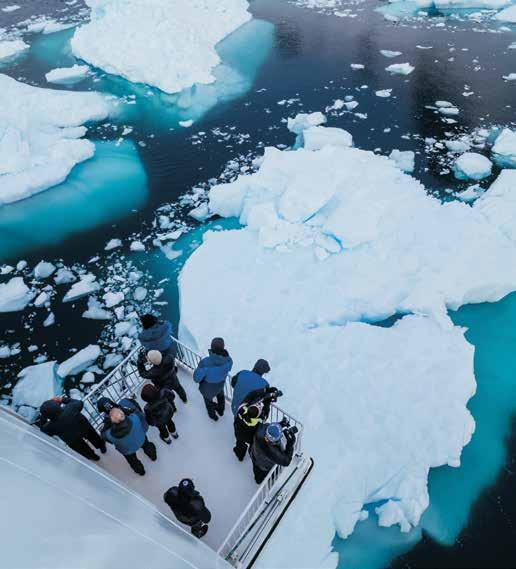

We’re committed to reducing our impact on the planet and working towards a sustainable future. Not only do we support local communities, with a donation from every booking going to the Explore Foundation, but every single one of our trips also has a carbon label. We select partners who subscribe to the highest environmental and safety guidelines. So by travelling with us, you’ll be contributing to vital projects to aid polar conservation.
We’ve always had flexible booking conditions for your peace of mind, so you can book your polar voyage with confidence. To find out more, visit explore.co.uk/flex
Introducing four new expeditions and the state-of-the-art vessel set to debut in the frozen wilderness.
A brand new vessel is set to make her maiden voyage in 2025 and she’s right on the cutting edge of nautical technology. The robust and powerful Douglas Mawson ship – named after the legendary Australian geologist and explorer –cuts swiftly through the waves thanks to its Ulstein X-BOW hull, making journeys not only smooth and quiet, but more sustainable. A highly qualified expedition team can take up to 130 guests on off-ship adventures, while on board, the Citizen Science Centre, lecture theatre, library and observation areas give more opportunities for learning. Relax in the ship’s restaurants, heated pool, sauna and jacuzzis or unwind in your cabin.
It’s right on the cutting edge of nautical technology.


You’ll experience the extraordinary beauty and biodiversity of New Zealand’s sub-Antarctic islands and beyond on this expedition. Observe yellow-eyed penguins as they waddle through rātā forests, and emperor and Adélie penguins, grouped on the edge of the pack ice as you cross the Antarctic Circle and continue deeper south. explore.co.uk/DMEP
Few stories are as epic as those of the Golden Age explorers who sailed the southern seas. Follow Scott, Ross, Amundsen and Shackleton on a journey beyond the Antarctic Circle, where Weddell and leopard seals rule, whales hunt for sustenance and penguins leap through the waves.
explore.co.uk/DMEA
Reach the seldom-visited islands of the antipodean sub-Antarctic, including the birdlife-rich Stewart and Ulva Islands. The Fjordland’s deep Sounds are breathtaking and the craggy coast of the Snares offer yet more rare wildlife encounters. Tales of past sealers, explorers and settlers are just as captivating. explore.co.uk/DMSA
You’ll be transported back to the Heroic Age of East Antarctic exploration as you retrace the historic voyage of Sir Douglas Mawson. Keep watch for emperor and Adélie penguins porpoising along the ice edge, orcas patrolling for prey, and snow petrels soaring against a backdrop of the vast Antarctic Ice Sheet. explore.co.uk/DMMA
We’ve created the Explore Loyalty Club because it only seems right that the more you travel with us, the more benefits you should get:
SAVE 5%* on your third and subsequent trips, SAVE 7%* on your fifth and subsequent trips, and SAVE 10%* on your tenth and subsequent trips.


*The loyalty discount applies to the trip only element of your booking and excludes flights. For full Ts&Cs see explore.co.uk/loyalty. A different loyalty scheme applies for family adventures.
You’ll also get an early heads-up on new trips, access to exclusive offers and partner discounts, plus big savings when you recommend a friend to Explore. Speaking of which...
Matchmaker
If you know someone that you think would like Explore and our trips, please introduce us! For every friend who books a trip with us, we’ll give you both a £100 credit as a thank you. Win-win. Find out more at explore.co.uk/recommend-a-friend
The old switcheroo!
We’re so sure you’ll love our trips that we REALLY want you to try them. Book your next trip with Explore and we’ll reward your previous loyalty... even if it wasn’t to us! Find out more at explore.co.uk/loyalty-switch
Pass it on
Now you can share your loyalty benefits with up to five members of your family so whatever discount you get on our trips, they’ll get too! Find out more at explore.co.uk/pass-it-on


From counting whales to collecting seawater samples, every individual has the power to make a difference by participating in engaging, interactive projects.
Unravelling secrets of our planet’s past to help predict its future, scientists go to extreme lengths to conduct their research – often travelling to the ends of our earth. Instrumental in shaping a global climate, dictating ocean currents and providing a habitat for multiple species, the Polar regions hold a vital bank of information, frozen into the ice. In the past, research teams have discovered hidden ecosystems, subglacial aquifers of ancient seawater, new minerals and even the world’s largest soft-shell egg.
But you don’t need an academic degree to make observations. With so much new information emerging daily, every pair of hands, ears and eyes is useful.
Entering the Oxford English Dictionary in 2014, ‘Citizen Science’ is a relatively new term, although the concept has been around for some time. In 1900, ornithologist Frank M Chapman from the Audubon Society launched a Christmas Bird Census, inviting amateur birders to count species and pool their findings. Still running today, the annual event has led to more than 300 scientific papers being published.
Essentially, Citizen Science is the collection and analysis of data relating to the natural world by members of the general public, often as part of a collaborative project with scientists.
Factoring in the costs of chartering a vessel and paying for fuel, funding a scientific mission is extremely expensive. In 2023, the Arctic Council reported that 54 research vessels entered the Arctic region – almost half the number of leisure cruise vessels. According to IAATO, approximately 100,000 tourists visited Antarctica last year – ten times the number of professional scientists. Transforming expedition ships into scientific platforms not only makes practical sense; it’s a moral duty for any responsible company operating in the region. Occasionally, professional research teams are offered free passage in exchange for giving lectures and sharing insights with guests. But the value of Citizen Science projects is rapidly growing, meaning you can be an important part of the story too.


Creating Antarctic Ambassadors is always a rewarding experience. It shows that your team has done a great job of passing on their love of the region. People protect what they love.
Ashley Perrin Expedition leader
Many expedition ships have a Citizen Science co-ordinator, who looks after a programme of projects connected with international scientific organisations. There’s no pressure to participate, but anyone interested in particular activities can sign up to join sessions either on deck or in the field. Some vessels have dedicated science labs with microscopes and other scientific equipment where data can be analysed. Later, in lectures, findings can be discussed.
Many different projects depend on Citizen Science to collect data for long-term studies or to help inform decisions about rules and regulations. For example, an increase in whale sightings in certain areas of Antarctica has led to the introduction of 17 ‘Go Slow’ zones, where ships cannot exceed 10 knots. So every observation, bird count and water sample collected really can make a difference.
Launched by the Cornell Lab of Ornithology and the National Audubon Society in 2002, eBird has become one of the most useful tools for understanding global bird behaviour. Over the course of a set period – usually 30 minutes – guests will be invited on deck to count the number of species they observe. Data is then uploaded to the eBird app along with GPS co-ordinates, helping scientists gain a broader understanding of species occurrence in different geographical locations and migration timings. Members of the expedition team are on-hand to help guests identify birds accurately, providing a good opportunity for amateurs to improve their knowledge.
“I was always interested in science, but never had the opportunity to study the subject properly at school. For that reason, I didn’t think I’d have much to offer in the citizen science sessions, but I thought I’d go along anyway.
I found the cloud survey really interesting and enjoyed learning about how the environment affects cloud patterns. I also went on a Zodiac trip to collect samples of plankton from the water, which we later studied under a microscope. The experience gave me a new perspective on our Arctic environment and the value of something so small in the food chain all the way up to the polar bear.
Obviously, it was sad to find pieces of plastic. But the discovery helped me understand how plastic affects our ocean and every species in the food chain. It’s a complex issue which everyone has a link to because we all use plastics.
Overall, the programme was done in such a way that it made me care about where I was and the bigger picture. I’ll definitely share my stories and talk to people about my experience when I’m back home.”
Natalie Penge, ship guest

Focusing on cetaceans, Happywhale adopts a similar approach to collate an ever-growing database of whale movements around our oceans. Remarkably, it’s possible to identify individuals from unique markings on their tail flukes, fully visible when they take a deep dive. Anyone who captures the moment on camera is invited to upload the image to the Happywhale app, where artificial intelligence is used to identify the animal. Data is then added to a map where it’s possible to track the whale’s journey around the globe.
Occasionally, however, there will be no records available – an indication that a new individual has been found. Journalist and broadcaster Mark Stratton was fortunate enough to photograph an unknown humpback on a voyage to Antarctica.
“If you have the incredible privilege of spotting a whale for the first time, as I did in 2022 on a voyage, you get to name it,” he explains. “A few of us got the photographs so we decided we’d call the whale Quest Antarctica –after the ship called The Quest, which is where Shackleton died in 1922 off the coast of South Georgia.”
What’s happening in the sea and sky can also reveal clues about a changing environment. Studying the clouds might sound like a form of daydreaming, but monitoring the movement and type of vapour overhead can provide important information about climatic changes and rising sea temperatures. As part of the NASA-sponsored GLOBE Program, satellites orbit Earth to get a top-down view. By timing observations to match the moment they pass overhead, members of the public can provide a bottom-up perspective.

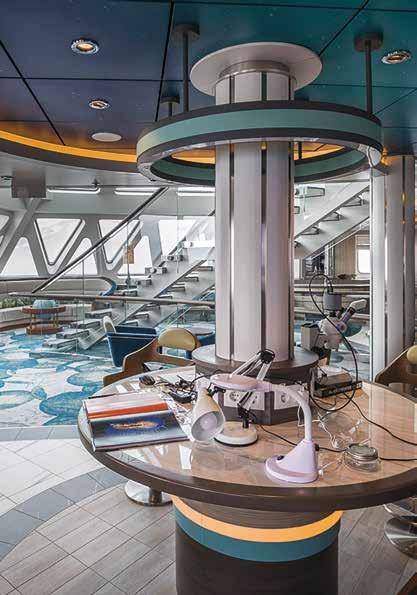

taking a scoop of sand from a set quadrant along the coast and sieving it with water. Any suspect finds are taken back to the ship and studied under a microscope.
Taking part in Citizen Science projects is undoubtedly fun, but research also contributes to a greater purpose. No matter how small or seemingly insignificant, every sighting, recording and sample collection can make a difference – shaping policies, informing behaviour and even finding solutions for global problems. The Scripps Institution of Oceanography, for example, recently published a report championing the effectiveness of citizen science programmes in addressing a wide gap in global biodiversity monitoring.
Back down at sea level, warmer weather and melting freshwater glaciers are undoubtedly having an impact on our oceans, threatening the production of microscopic phytoplankton. At the base of the aquatic food web, these tiny algae are the foundation for all marine species, making them enormously important. Through photosynthesis, they absorb as much carbon as forests and other terrestrial plants.
Run in conjunction with Argentina’s National University of La Plata and the Scripps Ocean Institute, the FjordPhyto project gathers samples from polar waters to gain an overall picture of phytoplankton production. Heading out on a Zodiac, a group of up to eight guests is tasked with collecting water samples and recording sea temperatures. By lowering a Secchi Disk below the surface, it’s also possible to gauge the depth of phytoplankton in the water column.
Transforming expedition ships into scientific platforms not only makes practical sense; it’s a moral duty.
Possibly one of the biggest threats to our oceans comes in the form of microplastics, miniscule pieces of poisonous material carried by currents from industrialised countries and absorbed into the food chain. The Big Microplastic Survey has been set up to determine the scale of the problem using information collected by a universal network of scientists and members of the public. The best way to detect traces of toxic debris is by
More importantly, it underpins the very essence of Polar exploration. According to The Antarctic Treaty, a document designed to regulate the only continent on our planet without a native human population, Antarctica is a place “for peace and science”. Although different rules of government apply to the Arctic, the same approach should apply.
Anyone privileged enough to visit these fragile areas has a responsibility to make a positive contribution –whether that’s collecting data or returning home with a deeper understanding of our place in the natural world.
“You’re not just coming to be entertained, you’re coming to be informed, inspired and be motivated to better yourself and the environment around you,” implores legendary marine biologist and oceanographer Sylvia Earle.
Challenging, confounding but above all captivating, a trip to the frozen extremes is more than an adventure, a holiday or an education. It’s an experience with the power to transform mindsets, revolutionise behaviour and profoundly change the way we live our lives.

To read this feature online visit explore.co.uk/ citizen-science-in-depth

The pinnacle of all penguin species, emperors command areas of an icy empire almost impossible to penetrate. But dedicated voyages on specialised vessels promise to venture beyond most tourist ships, offering a rare opportunity to explore their snow-swathed realm.
There are patches of our planet so remote, inaccessible and hostile, it would be easier to land on the moon. But space-age technology is revealing exciting new information about life on our own Earth, proving swathes of land presumed empty are in fact thriving with life.
In January 2024, scientists from the British Antarctic Survey discovered four new emperor penguin colonies in Antarctica using satellite imagery. The advanced technology detected very basic clues in the ice: big brown stains identifiable as emperor-sized poo.
The largest of the 18 penguin species, these waddling goliaths are also the hardiest, capable of living on the ice in temperatures as low as -50C. Elusive and secretive, their remoteness makes them challenging to study.
Breeding in areas along the seventh continent’s coastline far beyond the easily accessible western peninsula, where most expedition ships voyage, they are rare to spot and have assumed a near mythical identity. For lovers of nature and frozen wilderness, seeing one of these stately creatures is a wildlife holy grail.
Although ‘large penguins’ were described by crew members of James Cook’s voyage between 1772 –
1775, the first recorded observation of an emperor was by Russian navigator Thaddeus von Bellingshausen in 1820 during a circumnavigation of Antarctica.
Twenty years later, polar explorer James Clark Ross brought specimens back to the British Museum to be stuffed and put on display.
Explorers and naturalists became fascinated by the streamlined, elegant birds with a brushstroke of gold across their chests. Famously, members of Robert Falcon Scott’s doomed 1911 expedition to the South Pole, braved blizzards and extreme darkness to collect emperor penguin eggs in what would later be described as ‘the worst journey in the world’. Carried 25,000 km by sled and ship, three specimens are now carefully stored away in the Natural History Museum’s archives.
Fortunately, quests to see the hallowed colonies are no longer a life-risking endeavour. Although that doesn’t mean it’s easy.
Occasionally during the Antarctic season (which runs from late October to March), solo birds are seen drifting on ice floes, lost and separated from groups. But a chance to observe the seabirds in large numbers requires careful planning.
A handful of companies offer dedicated itineraries, using specialised ice-breaker vessels to access places off-limits to most ships. In the mid-1990s, the most northerly breeding colony of 10,000 emperor penguins was discovered at Snow Hill, an island on the east coast of the peninsula in the Weddell Sea.
Covered by a thick layer of sea ice year-round, this area is notoriously challenging to reach. Wild and unpredictable, it’s an ever-shifting seascape, often barricaded by a parade of tabular icebergs stretching into a foggy infinity.
Described by Sir Ernest Shackleton as ‘the worst sea in the world’, the Weddell became a watery grave site for his ship Endurance, lost in 1915 and re-located at a depth of 3008 metres in 2022. It wasn’t the first abandoned mission in the region. In the early 1900s, Swedish geologist Otto Nordenskjöld and his team were forced to spend several winters in small huts on Snow Hill and Paulet Island after their ship Antarctic was trapped in pack ice.
Sailing through these challenging waters retraces the paths of great polar heroes, albeit with 21st century equipment capable of making journeys once thought impossible. Scheduled for November, when skies bleed pink at dawn and dusk, itineraries utilise a narrow window of opportunity to find emperor penguin parents, nurturing newly-hatched fluffy grey chicks.
Exploring from the eastern edge of the continent, navigate an icy route traversed by glory-seeking explorers, elevating the expedition experience on the luxurious 130-passenger Douglas Mawson. Slicing through sparkling ice sheets to reach the deep south, encounter Adelies, snow petrels and leopard seals. In areas this remote, the chances of seeing emperor penguins are hopeful.
Ross Sea Odyssey explore.co.uk/DMEP

Seeing one of these stately creatures is a wildlife holy grail.
Powered by liquefied natural gas, the icebreaker Le Commandant Charcot has enough power to tackle the challenging Weddell Sea, reaching areas inaccessible to other ships, all while offering luxurious comfort to its 245 passengers. As you head towards the colony at Snow Hill Island, scour the ice floes for signs of the largest penguin species, which breeds exclusively on these frozen platforms.
Emperor Penguins of the Weddell Sea explore.co.uk/CCEP
On the other side of the white continent in the Ross Sea, crossing the Antarctic Circle from New Zealand, January is the best month to sail. Closer to the South Pole, a quarter of the 600,000-strong emperor population resides amidst historic huts and bases commemorating the great days of polar exploration.
Less visited by tourists, a white canvas extends to the edge of existence as the Antarctic Ice Sheet flows into the world’s largest floating ice shelf. This is a realm of soaring snow petrels, prey-seeking pods of orca and the largest Adelie penguin colony.
With nature, of course, there are never any guarantees. But simply being in these environments shares an insight into the world of a species seen by few but appreciated by many.
Cute, comical and captivating, there are multiple theories for why we love penguins.
“One reason that so many of us are fascinated by penguins is that they resemble us,” writes Jeffrey Moussaieff Masson in his book The Emperor’s Embrace. “They walk upright, the way we do, and, like us, they are notoriously curious creatures.”
When it comes to emperors in particular, it’s hard not to anthropomorphise. We are drawn to their noble and heroic behaviour. Incubating eggs between their feet, fathers withstand the toughest winds and harshest conditions to over-winter on the ice. Huddling together for warmth in a rugby-style scrum, thousands of individuals become one community, rotating slowly and switching positions to ensure everyone survives.
It’s a selflessness that’s rare in the animal world and perhaps increasingly hard to find in humans.
We are constantly learning more about emperor penguins, but perhaps they are teaching us new things too.

Scott Portelli is one of the specialists on our Polar voyages. He is a multi-award-winning wildlife, nature and underwater photographer.

You have travelled the world to capture the most remarkable animals and places on Earth, yet your focus remains Antarctica and the Arctic regions. Why?
The polar regions draw me for so many reasons. The diversity of the wildlife; the unique and dramatic landscapes; the mountains made of ice; the sounds of a glacier cracking, the sight of a whale breaching, the desolate, huge expanse of white that is totally disorientating... Antarctica is a photographer’s dream. Everything about it – and indeed about the Arctic – is extreme: such darkness in winter, countered by endless daylight in the summer periods, and colours the like of which you will never have seen. Antarctica is a place that is beyond imagination. And once you see it, you will feel compelled to visit again and again.
Do you have a favourite photograph?
I have many that I am proud of, but one of my favourites is of a resting Weddell seal on ice with its flippers crossed. It looked completely at peace. The way I exposed the shot and presented it created a sense of place and, I think, captured the essence of how harsh the Antarctic is.
Can you tell our readers about one of your most special experiences?
Last year, on one of my Antarctica expeditions, a large group of crabeater seals kept coming up to my Zodiac to check me out before darting back to a nearby iceberg. They did it again and again – a great display of curiosity and caution.
What’s it like being part of an expedition crew?
Tremendous! Camaraderie, shared knowledge, the joy of seeing something ignite in passengers when they first step foot on Antarctica, or when they see a whale or an albatross, or a polar bear in the Arctic. As crew, you are part of a support mechanism where you are always learning from each other and you are involved on so many levels with passengers. Part of my job is to help people take photos they’ll treasure, and which will remind them of visiting the most extraordinary places on Earth, but I also see my role as educating, and creating awareness of what we can do to preserve and protect these incredible wildernesses. What’s always in your kit bag?
A variety of lenses – long for the ship and zodiac cruises, and mid-range for land. Rain jackets for lenses –and for me. Extra batteries and memory cards. And, very, very importantly, lens cloths in every jacket. What can people expect from the onboard photography experts during a voyage? What will they learn? How will their skills be enhanced?
Gosh! So much. There are lectures, Q&A sessions, small group tutorials, workshops, and Zodiacs that go out specifically for photography, and there are handouts and cheat sheets to help. And all the specialists – from different disciplines – are available for informal chats too, to give advice and to ensure that everyone gets the most out of their trip. Where photography is concerned, it doesn’t matter whether people come with a professional camera, or only a mobile. I will still ensure they leave the trip with an understanding of how to shoot in the polar regions, and some terrific images.

Check out more of Scott’s handy photography tips explore.co.uk/blog/scott-portelliphotography
Once you see Antarctica, you will feel compelled to visit again and again.

1. Rule of thirds
For a more impactful photograph, keep your subject in the right or left third of your shot, leaving the other two-thirds open.
2. Leading lines
Lead viewers through the frame to the focal point by using lines such as rivers or train tracks in your images.
3. Balance
To avoid imbalance when placing your subject off-centre, have a secondary subject in the background.
4. Framing
Frame your subject by, say, shooting it through an arch or window.
5. Point of view
Where you stand in relation to your subject is important. Shoot from multiple positions, angles and distances.
6. Depth of field
Use your aperture settings to determine what you want to keep in focus. A shallow depth of field results in a focused subject and a hazy background or foreground.
7. Symmetry and patterns
Use these to add balance, harmony and interest to your photos.
8. Negative space
Empty space around the subject can add impact, interest and definition to the subject.
9. Fill the frame
Close ups that fill the frame are effective. Experiment with the whole subject – a bouquet – or one part of it – a flower.
10. Moving subject

There are many ways to shoot moving targets, including using a fast shutter speed or following the subject with your camera.
The artist Vincent Van Gogh said that for him the night sky was more alive and more richly coloured than the day, and this is powerfully demonstrated in the dramatic and theatrical skyscapes of the polar regions. From solar eclipses to the Northern Lights and the Midnight Sun, the following trips will hopefully reveal these captivating wonders of nature.
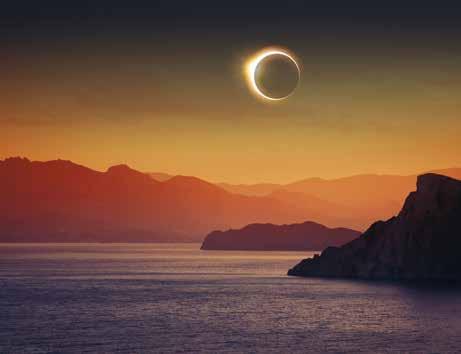
Spitsbergen, Greenland and Iceland Solar Eclipse –M/V Greg Mortimer
Board the premium vessel, Greg Mortimer, for a trip into the deepest fjord in the world, and beyond – to see polar bears, walrus and icebergs the size of mountains that glisten beneath a never-setting sun. You’ll visit three Arctic regions, taking Zodiacs to explore Spitsbergen, Kvalrossbukta, and the Inuit village of Ittoqqortoormiit. On day 11 (weather permitting), you will witness the total eclipse of the sun, when darkness descends for 138 seconds. Early booking is advised.
Read about the trip here: explore.co.uk/GMGS
Landscapes of West Greenland –M/V Sylvia Earle
This remarkable expedition on board Sylvia Earle will visit Nuuk, the northernmost capital on Earth, and remote landscapes that are rugged and raw. You will see incredible icebergs at Ataa Sund, and experience the wonder of the Midnight Sun throughout your journey.
Read about the trip here: explore.co.uk/SEWG
Northern Lights to the Polar Night –Le Commandant Charcot
An unforgettable trip with the possibility of seeing the phenomenal Northern Lights flickering their greens, blues and purples across the sky. Irrespective of this – nature doesn’t always perform on cue – this journey above the Arctic Circle from the northern coastlines of Norway to Spitsbergen, will deliver countless highlights. You will meet the Sami people, sail through fathomless fjords to reach mountain-high glaciers, see enormous colonies of seabirds and if conditions allow, visit the nature reserve on tiny Reinoya Island.
Read about the trip here: explore.co.uk/CCNL
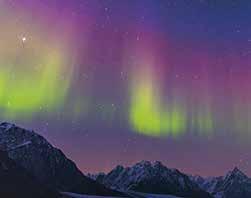


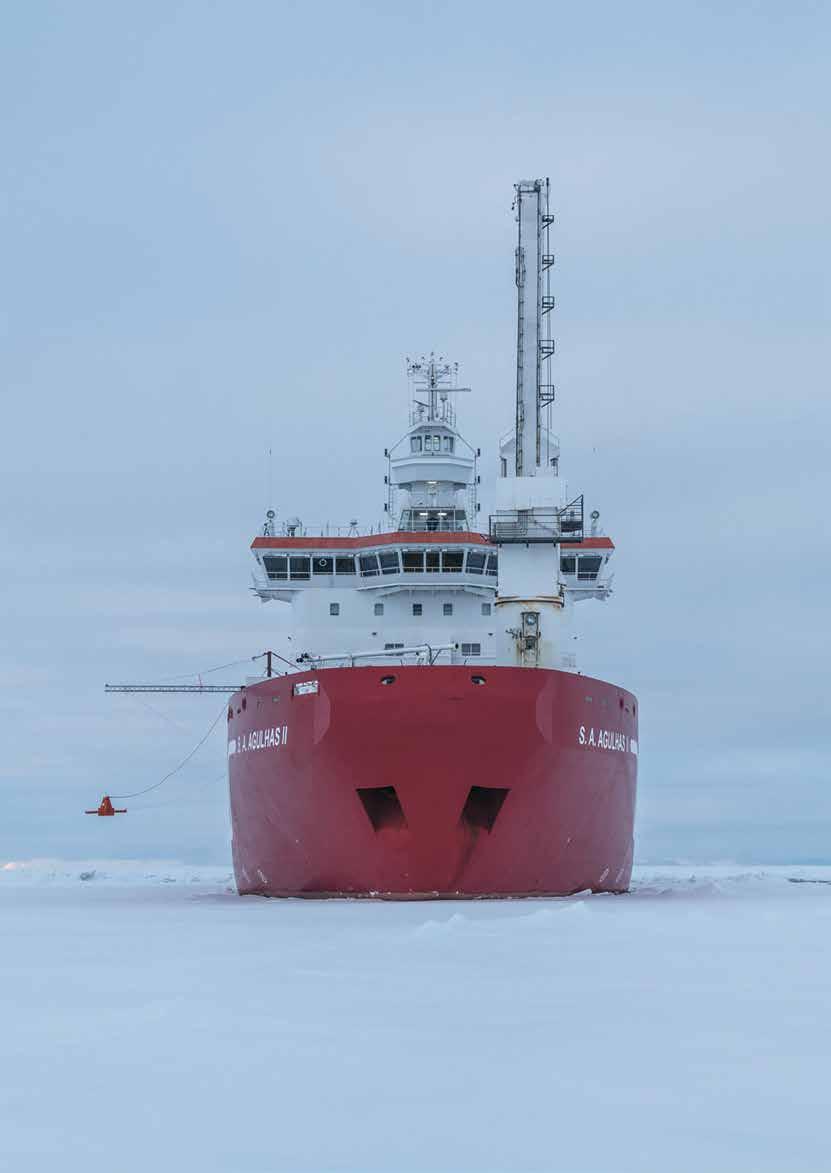
Finding a ship lost in ice for a century would be a miracle. But in Antarctica, broadcaster Saunders Carmichael-Brown discovered dreams do come true. © Esther Horvath

Antarctica is somewhere I’ve dreamed of visiting since I was a young boy. So, when I landed a spot on the 2022 Endurance Antarctic Expedition to make a documentary about the ‘lost ice ship’ of the Endurance, I jumped at the chance. What our small team discovered was nothing short of incredible – we had finally located one of the most famous shipwrecks in the world.
The aim of the Endurance22 expedition was to locate, film and survey the shipwreck of Sir Ernest Shackleton’s Endurance, which has remained at the bottom of the Weddell Sea for over 100 years. The big question was: why set out on such a challenge that had more likelihood of failure than success?
Sir Ernest Shackleton, an acclaimed British-Irish explorer, led the 1914–1917 Trans Antarctic expedition aboard the Endurance in hope of reaching the Antarctic mainland. When the ship became trapped in ice in the Weddell Sea, the crew went ashore, watching as the ship eventually (and devastatingly) sank. Equipped with just a small boat, Shackleton led himself and four others on an 800-mile ocean voyage, overcoming vast seas and crossing glaciers to reach the whaling station at South
Georgia. Thanks to their actions, all 28 of the Endurance crew survived – it’s one of history’s greatest Polar survival stories.
The story should also honour the Ross Sea party, a component of the Endurance expedition, where they encountered problems and several died; I always like to point them out, because it’s a part of the story that’s often forgotten. A few years ago, I discovered that one of my relatives was part of the crew.
Back to the present day, and our crew certainly had their work cut out for them. They only had a few rough navigations and diary entries from the Endurance’s original crew to work with. It was the job of marine archaeologist Mensun Bound and the Falklands Maritime Heritage Trust to compile a plan of action.
In February 2022, the Endurance22 expedition set sail onboard the SA Agulhas II, from Cape town in South Africa to cross the South Atlantic and into the Southern Ocean. We ventured into the Weddell Sea, one of the most inhospitable places on the planet, to find one of the hardest-to-reach shipwrecks in existence.
Our expedition lasted 57 days – 31 of which were spent in icy isolation. We sailed the storm-ridden Southern
Ocean, experienced temperatures as low as minus 36 Celsius with wind chill and a lack of darkness affecting our bodies. To emphasise our remoteness, at periods the closest people to us were on a space station!
There were several life-changing (and challenging) moments that made our journey feel as epic as the Endurance voyage itself. At one point, our ship got stuck in the ice and all the communications went down – it was eerily reminiscent of the Endurance’s expedition itself. As was our relationship with hope and optimism, factors that I’m sure were also integral to Shackleton’s epic survival story.
We had invested so much into locating the Endurance shipwreck that the idea of not finding it felt unfathomable. There was no contrast, no horizon. Just white. Everywhere. And then, with only a few days left before having to turn back, we hit the ultimate reward. On 100 years to the day (and almost to the hour) of Shackleton’s funeral, our high-resolution cameras revealed the first images of the Endurance, 3008 metres below the ice. It was as if Shackleton himself was unlocking the past to us on the anniversary of his death.
Unlike most other oceans, there are no wood-eating microorganisms in Antarctica, meaning the shipwreck was in pristine condition. And with clear water visibility, we could also clearly read the gold lettering spelling out Endurance on the ship’s stern – it looked as if it had only sunk yesterday.
During our expedition, the search for the Endurance was our priority, but we also had the opportunity to experience what else Antarctica has to offer. We saw Emperor penguins and adorable fur seal clubs, and the area of open water that we created behind the ship became a feeding ground for minke whales, in an otherwise white land of ice.
For a long period, the closest people to us were on a space station!
Locating the Endurance was a moment I’ll never forget. Two years later, I had the opportunity to return to Antarctica – this time in a far less stressful way and on a much more luxurious ship! Seeing icebergs of all shapes and sizes, billowing steam from the volcanic landscape of Deception Island, and two humpback whales breaching just metres from my kayak are memories that will always stay with me.
Whether it was part of an epic expedition or spotting unique marine life, one thing remains constant: Antarctica is truly life changing.
Travelling on a small expedition ship is the best way to visit this remote part of the world. It’s impossible to leave the Polar regions without becoming an ambassador for them.
Once you’ve seen it and once you’ve experienced it, you truly understand the importance of protecting our world.

Listen to Saunders recount more highs and lows of exploring the white continent. explore.co.uk/polar-journeys
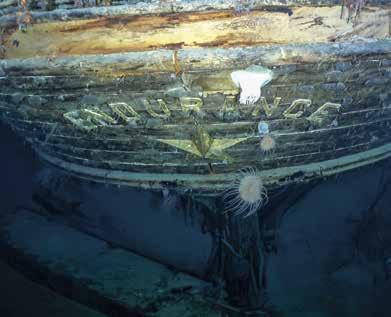


Well we’ve got good news for you! A documentary is coming to a streaming service soon!
History speaks of male Polar explorers but less often of the pioneering women whose journeys to the ends of the Earth can teach us not only about the natural world, but about the transformational power of determination.
By the time Ada Blackjack signed up to help Vilhjalmur Stefansson claim Wrangel Island – a remote location north of the Siberian coast – for the British Empire, she’d already proven herself a survivor. At just 25, the Iñupiat woman had escaped an abusive relationship, and lost two children while the third, Bennett, was being taken care of in an orphanage due to poverty and ill health.
The expedition held promise. Glory for Stefansson (a man who would fund the trip but not embark on it) and, for Ada, $50 a month to support her family. Stefansson sought an indigenous Alaskan that could sew furs and speak English. Ada was snapped up along with four men with stars in their eyes.
The man promised the trip would be simple, a jaunt to ‘The Friendly Arctic’ with rations for six months. Ice, harsh Arctic waters and unforgiving cyclonic winds proved otherwise. Over the next two years, all of the men, some of who showed cruelty to their only female traveller, would succumb to the elements. Ada, disrespected and underestimated, would be the only one to survive to tell her tale of perseverance and strength through hunger, the stalking threat of Polar bears and the raw elements to be reunited with Bennett.

Ada, disrespected and underestimated, would be the only one to survive to tell her tale.
Dartmouth Libraries


British Army physiotherapist ‘Polar Preet’ Chandi has traversed one of the most unforgiving landscapes of the world solo, at one point pulling her 75kg sled 700 miles in 31 days! She was the first woman of colour to complete a solo expedition across Antarctica and she holds Guinness World Record titles for the longest solo unsupported one-way polar ski journey for a woman, and the longest solo unsupported one-way polar ski journey overall.

American explorer, marine biologist and oceanographer Sylvia Earle has dedicated her life to learning about our oceans and the threats they face. She works as an author, lecturer, field research scientist, government official and director of a number of organisations that share her desire to protect our waters. Sylvia, who turns 90 in 2025, has a ship named in her honour. The Sylvia Earle is a floating ambassador for the planet with a fully equipped Citizen Science Centre, expert lecturers and a participative Citizen Science Programme.

Barbara Hillary made history when she was 75, becoming the first black woman to step foot on the North Pole. Five years later, the tenacious adventurer also became the first African American woman to stand on the South Pole, an incredible achievement made possible by her tenacity and determination to not only see the extreme wildernesses of the world, but to share the important lessons she learnt along the way with others.

Want to read more about inspirational women in Polar exploration, check out explore.co.uk/blog/pioneering-polarwomen
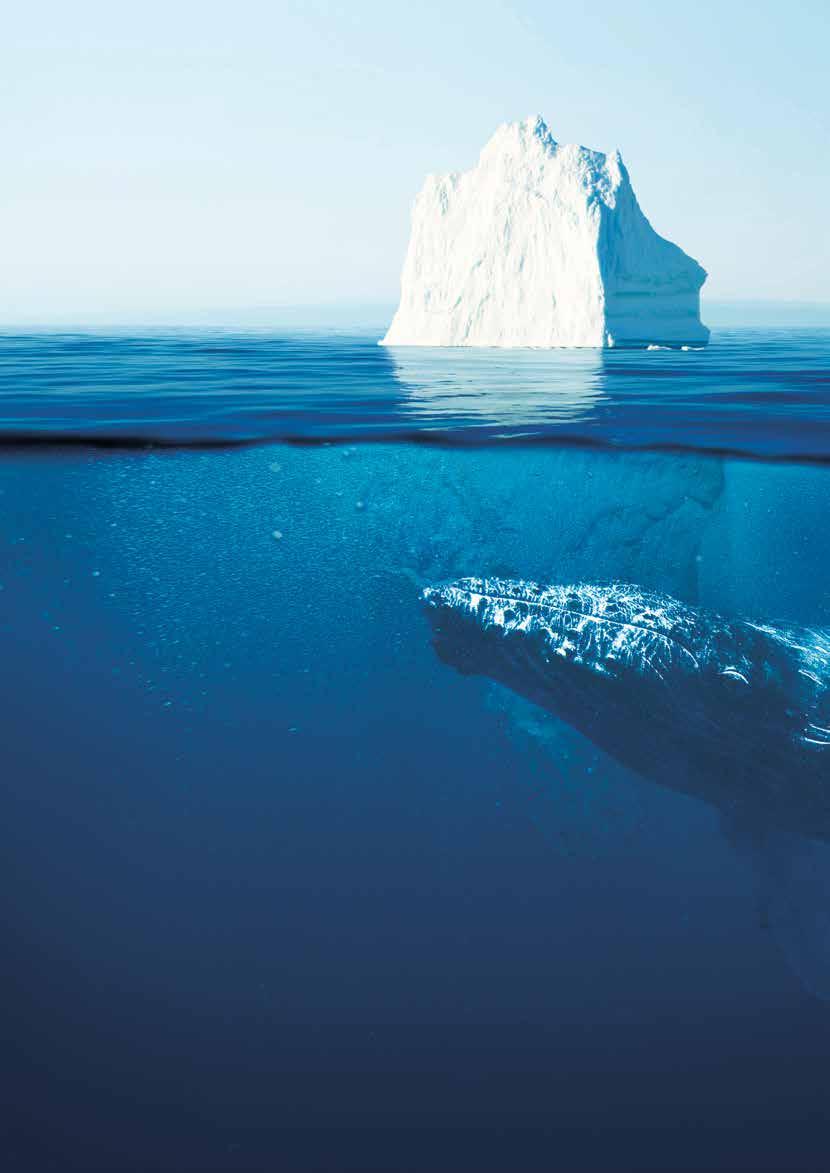
Freezing and inhospitable, the polar regions test skills of survival. But beneath the ice is a bountiful feeding ground, allowing multiple whale species to thrive. From May to September, when temperatures warm in the Arctic, pods of orca, humpback and sperm whales journey north. From October until March, the same species can also be found in the deep south along with the mighty blue whale.
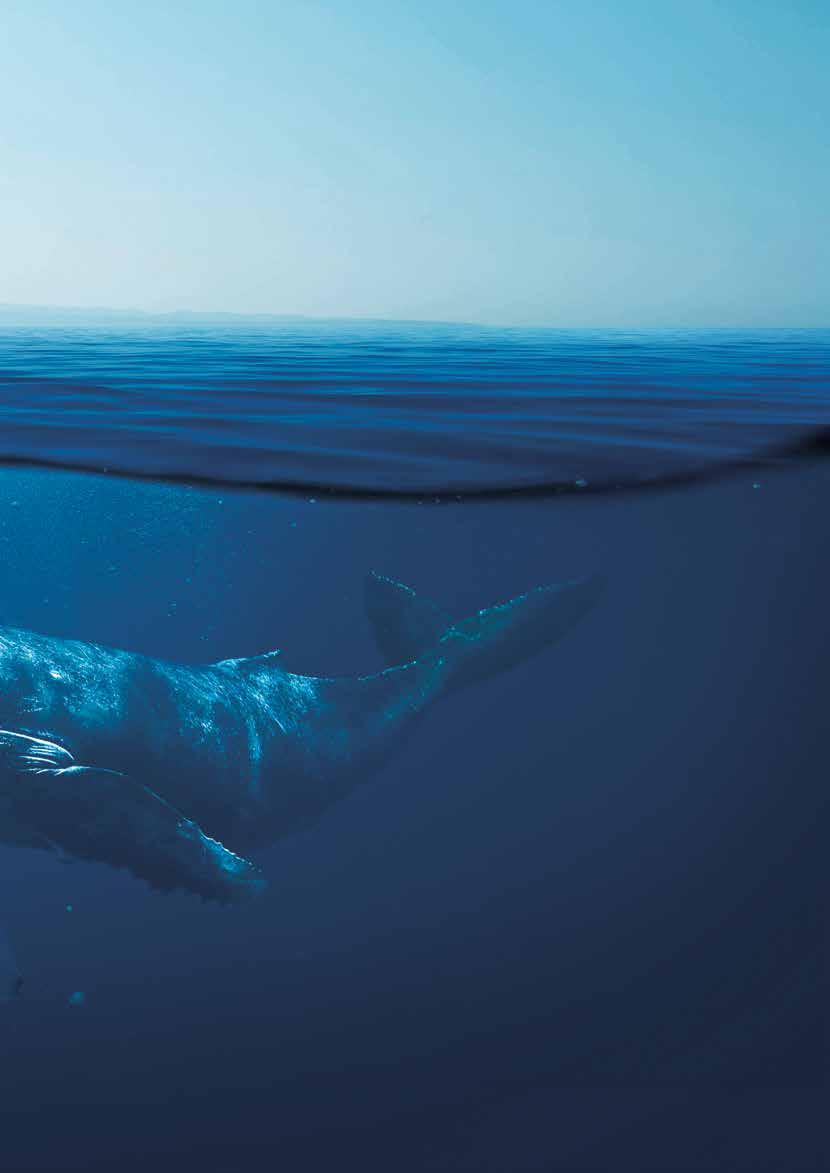
The roots of these marine giants can be traced back to the land, where they evolved from a common ancestor of the hippo 50 million years ago. Stranger still, DNA samples of sperm whales have been linked back to a single female whale living between 10,000 to 80,000 years ago.
The different species that evolved can be divided into two categories: toothed (orca, narwhal, sperm, beluga) and baleen (blue, humpback, bowhead, sei) whales. Although larger in size, the latter use fine keratin fringes in their mouth to feed on krill and small fish. As the name suggests, toothed species have the equipment to hunt squid and bigger fish.
Although younger than dinosaurs, whales are generally much bigger due to the absence of gravity underwater which means their bones don’t need to support their weight. Equivalent to 28 African elephants, blue whales are the largest creatures on earth. A small child could crawl through their coronary arteries.
The easiest way to spot whales is by their blows –exhalations of air and condensed water spouting from a blowhole on their heads. Look carefully, and it’s possible to identify the species. Humpbacks have bushy, ballooning blows rising 10-16 feet high, while a minke’s rasps are barely visible from a distance. A tall, thin column measuring about six metres most likely belongs to a fin, while the spray from a sperm whale angles sharply forward in a leftward direction.

Equivalent in weight to 28 African elephants, blue whales are the largest creatures on earth.
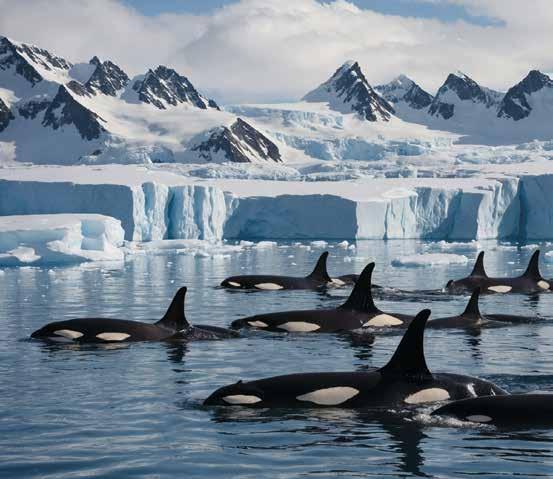


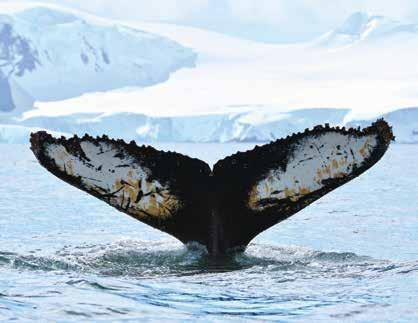
Although most of their bodies are submerged, these complex creatures exhibit an extraordinary number of behavioural displays above the surface. Humpbacks are the greatest performers, propelling their 30,000kg mass out of the water in a torpedo motion known as breaching. Along with flipper slapping on the surface, it’s a way to communicate with other whales.
Every humpback has different markings on its fluke, which can be used to identify individuals. Any photographs you take can be uploaded to the Citizen Science Happywhale (happywhale.com) programme to help chart the movement of individuals.
Before diving, they will slightly arch their backs and lift the fluke either low or high – depending on whether they take a shallow or deep dive. Tail slapping on the water is also part of a hunting strategy used to stun or confuse fish. The pod then creates a net with a ring of bubbles using their blow holes and swims through with their mouths wide open, a practice known as bubble net feeding.
Occasionally, a curious whale will spy hop by popping its head above water. These intelligent animals often associate with boats and kayaks but have enough spacial awareness to avoid any collisions.
A mix of pulses, clicks and whistles, whales speak a language we cannot understand. Capable of hitting every high note on a piano, male humpbacks are crooning Casanovas, winning mates by composing ballads. Fins opt for simpler renditions with a heavy bass, while bowheads have the widest repertoire and
can improvise like jazz musicians. Blues turn up the volume; at 186 decibels, their songs are louder than a a jet engine at take off and travel up to 1000 miles.
In 1970, bioacoustics expert Roger Payne kick-started the whale conservation movement by releasing the album ‘Songs of the Humpback Whale’, which sold 125,000 copies.
The most populous mammals after humans, orcas are found in most marine habitats. But the majority live in Antarctica. Expert apex predators – hunting for fish, seals and small cetaceans – they are also known as wolves of the sea or killer whales. But the name is misleading. They are, in fact, not even whales at all, but the largest species of dolphin.
Once decimated by a whaling industry at both poles between the 17th and 20th centuries, whales have made a remarkable comeback largely due to hunting bans. The endangered blue whale population, for example, is now believed to be between 10,000 and 25,000 whales, rising from just 2,000 at its lowest point. This can only be good news for the planet. It’s been estimated that a whale can consume the same amount of carbon over its lifetime as thousands of trees. Their faeces also act as a fertilizer, boosting phytoplankton which captures around 40% of all carbon dioxide produce.
Want to see whales in Antarctica?
Speak to one of our experts for the best time to go.
In January most gentoo, Adélie and chinstrap chicks have hatched and are enthusiastically chasing their parents around for food as they grow stronger. Visit the Antarctic Peninsula in January for sightings of the cute and fluffy penguin chicks as you walk among their bustling colonies.
Whether in the Arctic or Antarctic, you’re sure to be wowed by the wildlife. But what you’ll see can vary considerably at different times in the season.


March is peak time for whales in Antarctica, with humpback, minke and southern right whales all in the area for feeding. You’re likely to spot whales from your ship and if you’re lucky, get up close to them in your Zodiac or kayak. Watch in awe as the whale dives deep, offering a glimpse of its trademark fluke, before it disappears.
The skies are full in Antarctica and the Drake Passage in February as most seabird chicks have fledged. Watch skua skipping around among the penguins during your landings ashore, and spot albatross and petrel soaring just above the water from your ship as you cruise the Peninsula.
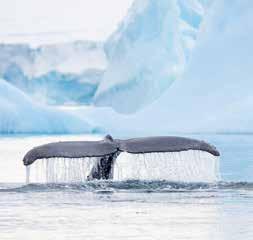

With the last trips to the Antarctic finishing earlier in the month, most of April is off-season for polar voyaging. There is too much sea ice in the Arctic still and it’s the start of winter in Antarctica, signalling the end of the tourist season.

There are chances to see polar wildlife in other parts of the world. Join our Wild Scotland expedition and spot puffins in abundance around the coastline, as well as cliffs at Hermaness National Nature Reserve alive with kittiwake, shag, snipe, dunlin, golden plover and Arctic Skua –making it one of Europe’s most diverse colonies.
Head to Svalbard in June for some of the best chances to see the polar bear, the ‘King of the Arctic’. The polar bears are on the hunt, and your expert guides will do their best to track them and get you safely in place to watch these majestic creatures from your ship or Zodiac.


Cruise the fabled Northwest Passage and you’re in for a chance of seeing some of the most unique and unusual ocean mammals. Beluga whales can be seen in pods in inlets and shallow bays and if you’re really lucky, you may even spot the unicorns of the sea, the narwhal, at the edge of an ice floe.
July in Svalbard sees huge groups of walrus gather together in ‘haul-outs’ for safety during the polar bear feeding season and they can be easily spotted along the coastline. Hundreds of these enormous mammals together, each with long tusks and weighing up to two tonnes, is a sight to behold.

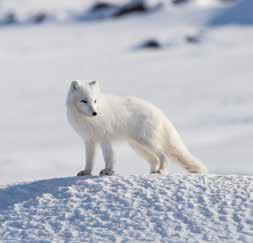
In summer the Arctic fox has a brown coat but in September, as winter approaches, it starts to turn into its luxurious and thick white coat. Look out for these curious furballs scurrying around the rocks and rubble of the Arctic tundra.

There are few trips running to the polar regions during October. Ships start to arrive in Antarctica at the very end of the month or in early November as the season starts. In the Arctic, the sea ice is too thick and the daylight hours too few to operate tours.

The breeding season for elephant seals peaks in mid-November in South Georgia, meaning the beaches are busy with bulls loudly fighting for their harems of females, much smaller in size than the colossal males. You may also see some pups from those that bred early in the season.
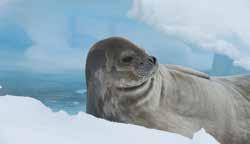
Take a trip out by Zodiac from your ship in Antarctica in December and you’ll likely come across seals. Groups of crabeater or Weddell seals can often be spotted lazing on ice floes and fur seals play along the coastline. The more solitary leopard seal can sometimes be spotted in the water or on the ice.


The ice-covered Arctic Ocean offers unrivalled wildlife encounters and ethereal landscapes. It’s time to board a life-changing expedition to the top of the world.
Covering around a sixth of the globe, this vast tundra fringed by glistening icebergs and occasionally crowned by the emerald streak of the Northern Lights, is a safari-like experience like no other. From the comfort of a purpose-built expedition ship, you’ll keep your eyes peeled for the tail flick of whales, toothy walrus and snatched sightings of rare seabirds – with shore landings whenever possible to get up close to the flora and fauna of the Arctic. You’ll also have the chance to search for the largest land carnivore in the world – the polar bear. Aboard a Zodiac and accompanied by a team of expert crew and naturalists, you’ll weave your way around drifting pack ice, looking for these apex predators in their natural habitat and hopefully ticking off one of the Earth’s top wildlife encounters.
With a plethora of polar adventures, we couldn’t squeeze them all in here. You can find more of our voyages online at explore.co.uk/polar
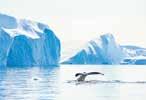
The Northwest Passage in Depth
On this epic 29-day voyage, we attempt to sail the full length of the Northwest Passage, carving through the labyrinthine maze of waterways that hug the fabled islands of Arctic Canada. explore.co.uk/SENI
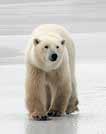
Polar Bears in Churchill (photography-focused itineraries available)
Page 48–49
Board a Polar Rover, a speciallydesigned vehicle to watch the bears in their natural habitat. On photographic departures you’ll be accompanied by an expert photographer.
Baf f in Bay
Wild Landscapes of Western Greenland
Page 47
Visit the isolated settlements of the far north, pushing through sea ice to where few tourists venture. Icebergs glitter in hidden bays where whales shelter.

LABRADOR SEA
Southern Greenland –On the Trail of the Vikings
As Vikings did, we’ll sail to the green pastures of the south, visiting their ruins and wilds and weaving through fjords and channels. explore.co.uk/SESG

Spitsbergen, Greenland and Iceland
Page 44–45
Explore the “jewels of the Arctic” on this in-depth expedition featuring unique wildlife, remote communities and stunning scenery.

A voyage into the kingdom of the polar bear; set amongst Svalbard’s striking glaciers, tundra and fjords. explore.co.uk/GMPB

Iceland’s Westfjords and North Coast
Page 43
The Westfjords are among Iceland’s most pristine regions. We search for whales and birds, drinking in the majesty of waterfalls, valleys and lava fields.

Northern Lights Explorer
Page 42
By day, explore remote islands, discover spectacular icebergs, and walk through breathtaking scenery. As night falls, look skywards hoping to catch the magic of the Northern Lights.
Denmark
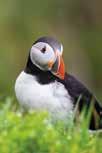
Explore the wild isles of Scotland, from the windswept Hebrides to the verdant Orkney Islands. Discover Viking heritage and dramatic landscapes in the Faroe Islands and glimpse traditional Icelandic life in the small town Seyðisfjörður. explore.co.uk/GMFI

Explore the Arctic and you’ll discover a vast history, rich cultures and unforgettable wildlife experiences that you won’t see anywhere else. Find out what to expect from your Arctic voyage.

Inspired by local and European dishes, there will be plenty of options on board to suit all palates. For those looking to extend their trip, you’ll have the opportunity to try locally-sourced food such as snow crab, a hearty traditional Norwegian stew, and seifilet fersks (fresh fillets of fish that are steamed, grilled or poached). Quench your thirst with beer brewed in Spitsbergen’s remote and icy capital, Longyearbyen.
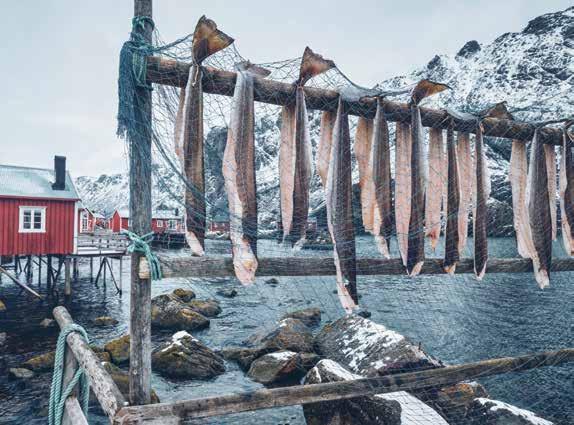

The Arctic covers a large distance, with temperature and weather changing dramatically depending on where you are. In early summer the Arctic is awash with long periods of sunlight, bringing flocks of seabirds to the cliffs. By mid-summer you may see dramatic glaciers collapsing so keep your camera close by. The tundra will also flourish with pastel-coloured wildflowers, making it a fantastic time of year for hiking. But don’t forget to stay wrapped up – weather patterns shift hour to hour, from sunshine to snow.
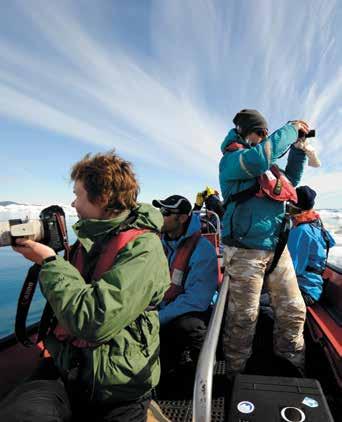
The Arctic is renowned for unrivalled wildlife experiences, and you can expect to spot mammal and marine life that you won’t find anywhere else. Keep your eyes peeled for the largest land predators on Earth –polar bears – which are only found in the Arctic. You may also spot solitary seals lazing on pack ice, and a variety of whales such as orca and humpback, especially during the summer.
Polar vessels are unlike any other ship you’ll have seen before. Small enough to work their way around ice but strengthened to withstand extreme conditions, these ships boast cutting edge technology. You’ll find launching platforms from which you’ll board a Zodiac to explore ashore, or take part in additional activities such as kayaking. While on-board, there’s no shortage of lounge space to simply relax and watch the icy landscape pass by.
Arctic expeditions are guided by ever-changing weather, wildlife opportunities and ice conditions. Like a safari, itineraries can be flexible to ensure you get the most out of your trip. Wherever possible your captain will steer you towards a pod of whales, or a scenic fjord, highlighting the best photo opportunities. Because of the unpredictable nature of wildlife, every Arctic voyage is unique and certainly unforgettable.

Arctic expeditions are guided by ever-changing weather, wildlife opportunities and ice conditions.

36 Realm of the Polar Bear in Depth
38 Wild Scotland
39 Iceland Circumnavigation
40 NEW Arctic Golden Autumn & Northern Lights
42 Northern Lights Explorer
43 Iceland’s Westfjords and North Coast
44 Spitsbergen, Greenland and Iceland
46 NEW Spitsbergen, Greenland and Iceland Solar Eclipse Departure
47 Wild Landscapes of Western Greenland
48 Polar Bears in Churchill
49 Polar Bears in Churchill Photo Adventure
50 Northwest Passage
51 NEW Disko Bay
52 NEW Journey to the Geographical North Pole

These are just some of our Arctic trips, to see them all go to explore.co.uk/arctic
Liefdefjord
Kross Fjord
Ny Alesund
SPITSBERGEN
Nordkapp
1717m
Newtontoppen
Barentsøya
LONGYEARBYEN
Søkapp
Embark on a voyage into the kingdom of the polar bear, exploring the striking glaciers, tundra and fjords of the Svalbard archipelago. Keep your eyes peeled for beluga whales breaking the surface and walrus lazing on the pack ice, as migratory birds call overhead.
Before Constantine John Phipps sailed towards the North Pole in 1773, no scientific descriptions of a polar bear had ever been logged. The explorers didn’t know that the spectacular beasts could weigh as much as ten men, or that the marine mammals could swim, without a break, for days at a time. While the Royal Navy expedition was scuppered by ice in Svalbard, putting an end
to plans to make it to the pole, it must have been extraordinary for the sailors to glimpse a precious polar bear for the very first time. While we might know much more about them today, allowing us to do more to protect them, the feeling of seeing one in a frosty landscape that is also home to walrus, whales, puffins and Arctic terns, is as awe-inspiring as ever.
It must have been extraordinary for the sailors to glimpse a precious polar bear for the very first time.

Duration: 12 days
Ship: M/V Greg Mortimer
Depart: June – August
Prices from: £11,499pp (trip only)
Carbon footprint: 4,020kg CO2e (average pp)

Day 1 Trip starts in Oslo
Day 2 Fly to Longyearbyen. Embark the M/V Greg Mortimer
Day 3 Visit Magdalenefjorden
Days 4-7 Explore Spitsbergen’s Northwest Coast
Days 8-9 Discover Hinlopen Strait and Alkefjellt
Day 10 Cruising around South Cape
Day 11 Sail towards Hornsund and Bellsund Fjords
Day 12 Arrive Longyearbyen. Trip ends in Oslo
Kayaking
Add on experiences in Longyearbyen (pre/post trip): Dogsledding on wheels
Electric bike sightseeing
Wilderness evening Kayak tours

By ship and Zodiac you’ll navigate the towering sea cliffs, caves and remote rugged islands of Scotland on this wild adventure to a birdwatcher’s paradise.
Some of the world’s largest seabird colonies call the Scottish islands home and you’ll explore them with our team of naturalists aboard the Greg Mortimer, spotting Arctic tern, fulmar, kittiwake, guillemot and shag.
The soaring sea cliffs of the UNESCO World Heritage-listed volcanic archipelago St Kilda are breathtaking in their vastness and beauty and you’ll delight in spotting endangered puffins and gannets as they take refuge on
Duration: 12 days
Ship: M/V Greg Mortimer Depart: May
the island. Cruising around craggy nooks on Zodiacs, seals, whales and dolphins may join you at the surface while basking sharks swim through the spectacular lochs.
The remote islands may not have many people occupying them today, but you’ll learn more about its past at ancient sites, monoliths and picturesque villages in the Hebrides, Shetlands, Orkneys and the lesser visited isles off the Scottish mainland.
Prices from: £7,705pp (trip only)
Carbon footprint: 3,310kg CO2e (average pp)

Cruising around craggy nooks on Zodiacs, seals, whales and dolphins may join you at the surface while basking sharks swim through the spectacular lochs.
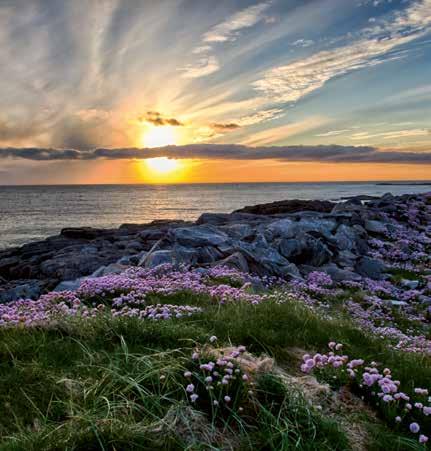
Day 1 Trip starts in Edinburgh
Day 2 Embark the M/V Greg Mortimer
Days 3-4 Explore the Inner Hebrides
Days 5-7 Explore the Outer Hebrides
Days 8-9 Discover the Shetland Islands
Day 11 Visit Kirkwall
Day 12 Trip ends in Aberdeen
Find out more explore.co.uk/GMWS


Trip
From the glittering black sand beaches to exciting geysers, explore the best of the Land of Fire and Ice on an Iceland Circumnavigation. Spot whales breaching the waves in Húsavík, hear birds calling from the cliffs of Látrabjarg, and marvel at the beloved Mjóifjördur fjord.
Duration: 12 days
Ship: M/V Greg Mortimer
Depart: May – June
Prices from: £8,505pp (trip only)
Carbon footprint: 3,313kg CO2e (average pp)
Itinerary
Day 1 Trip starts in Reykjavik
Day 2 Embark the Greg Mortimer and sail to Hvalfjordur
Day 3 Arnarstapi
Days 4-5 Westfjords
Day 6 Akureyri and Husavik
Day 7 Grimsey Island
Day 8 Seydisfjördur
Day 9 Djupivogur
Day 10 At Sea
Day 11 Westman Islands
Day 12 Trip ends in Reykjavik
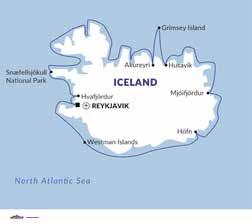

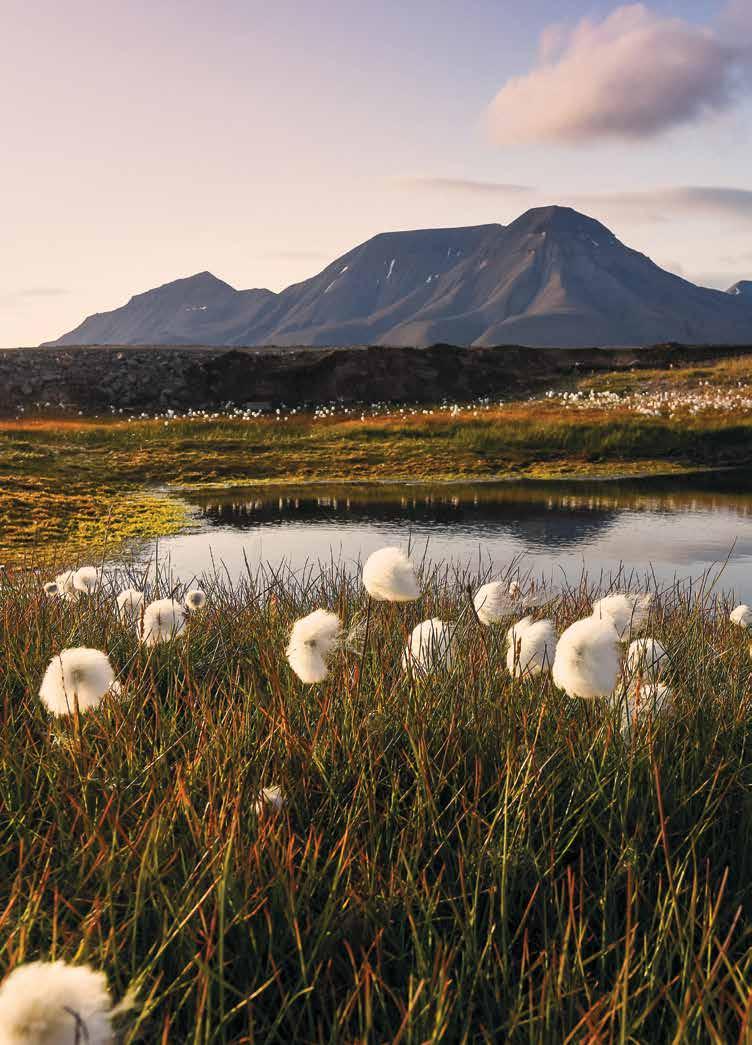
Marvel as the golden autumn light glitters on raw, cascading waterfalls and the waves of the High Arctic waters as we watch for whales. Journey across wildlife-rich volcanic islands and take in breathtaking glaciers before going in search of one of the most spectacular sights, the unforgettable Northern Lights.
This Arctic odyssey takes in extraordinary landscapes, rich culture, abundant wildlife and much more. From Iceland’s vibrant capital, we immerse ourselves in natural wonders. Dynjandi waterfall is likened to a bridal veil, given how it shimmers and cascades. On Vigur Island, the birdlife takes centre
stage, with vast colonies settling on the protected land. We’ll see the eiderdown harvest before travelling to the enigmatic Jan Mayen volcanic island, where no people live but birds, Harper seals and whales can be found. Polar bears in Svalbard and a journey into Norway offers opportunities to witness the aurora borealis.
Duration: 17 days
Ship: M/V Sylvia Earle
Depart: August
Prices from: £12,560pp (trip only)
Carbon footprint: 4,964 CO2e (average pp)

Optional activities
Kayaking Polar plunge
Day 1 Trip starts in Reykjavik
Day 2 Embark the M/V Sylvia Earle
Day 3 Dynjandi waterfall – Westfjords
Day 4 Vigur Island and Isafjordur
Day 5 At Sea
Day 6 Jan Mayen
Days 7-8 At Sea
Days 9-12 Svalbard
Day 13 Bear Island
Day 14 Sea Crossing to Norway
Day 15 North Cape
Days 16 Tromso
Day 17 Trip ends in Tromso


Trip
Skirt the coastlines of the Arctic Circle on this adventure as evening skies grow darker. The celestial wonder of the Northern Lights are never guaranteed, but these are prime spots to see the light show. The largest fjord system on the planet, Scoresbysund, is an ideal place to photograph icebergs and you can hike the remote Westfjords in perfect peace. Take in powerful, dramatic waterfalls, bird watch from white sand beaches and black, volcanic coastlines.
Duration: 18 days
Ship: M/V Sylvia Earle
Depart: September
Prices from: £14,195pp (trip only)
Carbon footprint: 7,917kg CO2e (average pp)
Day 1 Trip starts in Tromso
Day 2
Day 3
Day 4
Day 5
Embark the M/V
Sylvia Earle
Torsken and Anderdalen
National Park
Inner Passage and Svolvær
Leknes and Reine
Days 6-7 At Sea
Day 8
Days 9-14
Day 15
Day 16
Day 17
Jan Mayen
East Greenland
Isafjordur and Vigur Island, Westfjords
Thingeyri, Westfjords
Snaefellsnes Peninsula
Day 18 Trip ends in Reykjavik
Optional activities
Kayaking
Polar plunge
Add on experiences in Longyearbyen (pre/post trip): Dogsledding on wheels
Electric bike sightseeing
Wilderness evening
Kayak tours
Find out more explore.co.uk/SENL

Iceland is a land of thundering waterfalls, lava fields and verdant valleys where wildlife thrives and tenacious communities have settled among the spectacular geology.
On this trip, we explore Westfjords, pristine and remote, embarking on hikes in nature to look for Atlantic puffins and other birdlife that soar above the land of fire and ice. Whale watching is a must, as is a trip to the powerful Dynjandi waterfall. At Europe’s westernmost point, the cliffs of Latrabjarg are home to a large colony of nesting puffins, so be
sure to bring your zoom lens if you’re a keen photographer. Yet more Arctic birdlife can be found on Vigur Island and we take a hike there to spot them from volcanic vantage points. In the northernmost town on Iceland’s mainland, we’ll learn how fishing has shaped Siglufjordur and those who call the historic, quaint town their own.
Vigur Island
Thingeyri Patreksfjörður
Thingeyri Patreksfjörður
Grundarfjörður Arnarstapi
Grundarfjörður Arnarstapi
Vigur Island ICELAND
Siglufjörður Akureyri
Siglufjörður Akureyri
North Atlantic Sea REYKJAVIK
North Atlantic Sea REYKJAVIK
Duration: 9 days
Ship: M/V Sylvia Earle
Depart: June – July
Prices from: £6,819pp (trip only)
Carbon footprint: 1,672kg CO2e (average pp)
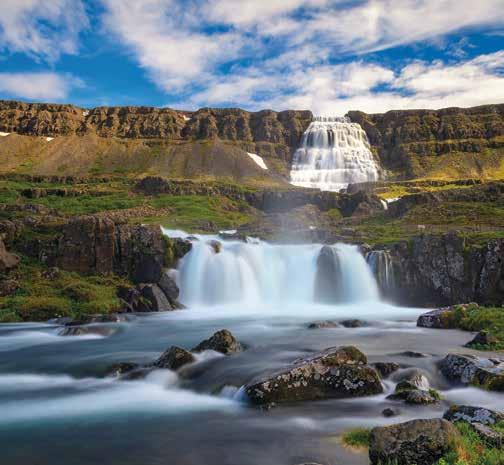
Norwegian Sea
Norwegian Sea
Optional activities Polar plunge ICELAND
Day 1 Trip starts in Reykjavik
Day 2 Reykjavik, Golden Circle tour. Embark the M/V Sylvia Earle
Day 3 Arnarstapi
Day 4 Patreksfjordur and Dynjandi waterfall, Westfjords
Day 5 Thingeyri, Westfjords
Day 6 Akureyri
Day 7 Siglufjordur
Day 8 Vigur Island
Day 9 Trip ends in Reykjavik

Explore all of the ‘jewels of the Arctic’ on this in-depth expedition featuring unique wildlife, remote communities and stunning scenery. Spot walrus, puffins and, if you’re lucky, polar bears in Svalbard before sailing towards Greenland and the massive glaciers and icebergs of Scoresbysund.
On the east coast of Greenland, the 500-strong Inuit community of Ittoqqortoormiit live alongside polar bears, millions of nesting seabirds, seal and musk oxen, using ancient traditions to hunt. We visit their colourful home on this tour of three islands, learning more about those who thrive on the tundra. Meet trappers and playful children who come to peek at us from beneath their
fur jackets. Taking the time to explore ancient grave sites and villages that were occupied by pre-Inuit 3,000 years ago allows us to better understand the people who live in this beautiful corner of the world, and the balance they’ve struck with the extraordinary wildlife they share their home with. Extend your stay in the Icelandic capital Reykjavik for an entirely different cultural experience.

Duration: 15 days
Ship: M/V Greg Mortimer
Depart: June – July
Prices from: £12,930pp (trip only)
Carbon footprint: 4,671kg CO2e (average pp)
This journey allows you to better understand the people who live in this beautiful corner of the world, and the balance they’ve struck with the extraordinary wildlife they share their home with.

Itinerary
Day 1 Trip starts in Oslo
Day 2 Fly to Longyearbyen. Embark the M/V Greg Mortimer
Days 3-5 Explore Spitsbergen
Days 6 Cross the Greenland Sea
Day 7 Jan Mayen
Day 8 Cross the Greenland Sea
Days 9-13 East Coast of Greenland
Day 14 Sail the Denmark Strait towards Iceland
Optional activities
Kayaking Polar plunge
Add on experiences in Longyearbyen (pre/post trip):
Dogsledding on wheels Electric bike sightseeing Wilderness evening Kayak tours

The same trip operates on the M/V Sylvia Earle see explore.co.uk/SEGI
Day 15 Trip ends in Reykjavik Find out more explore.co.uk/GMGI
There’s no time to waste when it comes to securing your spot on this exclusive trip – we’re heading into a world of near-endless daylight to see the celestial eclipse! In Svalbard, Polar bears roam and walrus roll around on sea ice as guillemots call from towering cliffs. The iridescent icebergs are breathtaking and the remote Inuit settlements give a deeper understanding of life in the region.
Duration: 15 Days
Ship: M/V Greg Mortimer
Depart: August
Prices from: £15,215pp (trip only)
Carbon footprint: 4,660kg CO2e (average pp)
As anticipation mounts, gather on deck in preparation for this unique celestial event.

Day 1 Trip starts in Oslo
Day 2 Fly to Longyearbyen. Embark the M/V Greg Mortimer
Days 3-5 Explore Spitsbergen
Day 6 Cross the Greenland Sea
Day 7 Jan Mayen
Days 8-10 Ittoqqotoormiit and Scoresby Sund
Day 11 Solar Eclipse
Days 12–13 East Coast of Greenland
Day 14 Sail the Denmark Strait
Day 15 Trip ends in Reykjavik


Trip
Sail far north along Greenland’s western coastline. Enter a region where few tourists venture to explore hidden bays with glistening icebergs and where the night sky may surprise you with a dazzling display you’ll never forget.
Duration: 15 days
Ship: M/V Sylvia Earle
Depart: August
Prices from: £11,075pp (trip only)
Carbon footprint: 8,676kg CO2e (average pp)
Itinerary
Day 1 Trip starts in Toronto
Day 2 Fly to Nuuk and embark the M/V Sylvia Earle
Day 3
Day 4
Sisimiut
Qeqertarsuaq, Disko Island
Days 5-7 West Coast of Greenland
Day 8 At sea
Day 9
Days 10-11
Day 12
Day 13
Day 14
Qeqertarsuaq, Disko Island
Ataa Sund, Ilulissat
Aasivissuit-Nipisat UNESCO
World Heritage Site
Eternity Fjord
Disembark in Nuuk. Fly to Toronto
Day 15 Trip ends in Toronto

Optional activities


Trip
Go in search of the majestic polar bear in Churchill, home to the world’s greatest concentration of polar bears. Board a Polar Rover, a specially-designed vehicle to watch the bears in their natural habitat and safely watch them interact, and learn of their behaviour from the expert guides.
Duration: 6 days
Transport: Polar Rover
Depart: October – November
Prices from: £8,765pp (trip only)
Carbon footprint: 281kg CO2e (average pp)
Day 1 Trip starts in Winnipeg
Day 2 Winnipeg to Churchill –evening on the tundra
Days 3-4 Polar bear viewing Day 5 Explore Churchill. Fly to Winnipeg. Day 6 Trip ends in Winnipeg

Find out more explore.co.uk/CHPB

Spend an extra day in Churchill and experience a night-time tundra excursion on our longer 7-day trip. See explore.co. uk/CHPBX
Join an expert photographer-naturalist on this exciting trip designed to capture the magnificent polar bears in their Arctic tundra habitat. Spend three full days photographing the bears and other Arctic wildlife from the bespoke Polar Rover vehicle that allows you to safely get up close.
Duration: 7 days
Transport: Polar Rover
Depart: October – November
Prices from: £9,599pp (trip only)
Carbon footprint: 304kg CO2e (average pp)
Itinerary
Day 1 Trip starts in Winnipeg
Day 2 Winnipeg to Churchill
Days 3-5 Polar bear photography
Day 6 Churchill to Winnipeg
Day 7 Trip ends in Winnipeg



Learn of the fascinating, rich history of the Northwest Passage as your sturdy ship weaves through its icy labyrinth of channels. Meet the indigenous people who call this remote region home and watch for wildlife like walrus, whale and polar bear.
If you’re filled with the spirit of adventure and you wish to sail through pack ice in a place which has been luring pioneers for centuries, then the legendary Northwest Passage is calling. This is an expedition in the truest sense, taking you along the treacherous passage that has for centuries caused hopeful travellers to come unstuck. To this day, it challenges our ship’s captain, due to unpredictable
weather conditions. Add your name to the list of explorers that have travelled it, including Franklin, Amundsen and Larsen. Franklin’s ship was lost with 120 people aboard and others got into difficulty trying to find them. Ice still threatens to halt our progress through the frozen labyrinthine channels, but it wouldn’t be a true polar journey without the thrill of adventure!
Duration: 16 days
Ship: M/V Greg Mortimer
Depart: August – September
Prices from: £15,950pp (trip only)
Carbon footprint: 5,275kg CO2e (average pp)
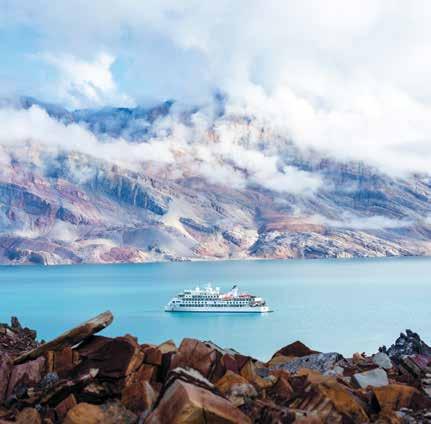
Day 1 Trip starts in Toronto
Day 2 Fly to Nuuk. Embark the M/V Greg Mortimer
Day 3
Sisimiut
Day 4 Ilulissat
Day 5
Qeqertarsuaq (Disko Island)
Day 6 At sea and Expedition cruising
Days 7-9 Expedition cruising
Days 10-11 Devon Island, Lancaster Sound
Days 12-14 The Northwest Passage
Day 15
Disembark in Cambridge Bay. Fly to Calgary
Day 16 Trip ends in Calgary

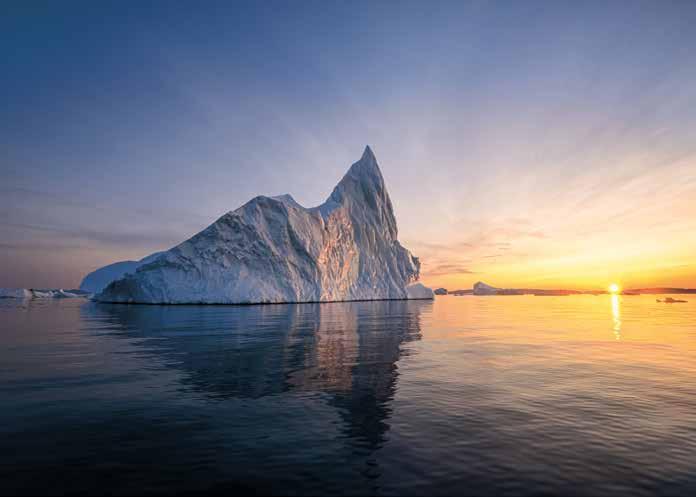
Trip
Join Le Commandant Charcot on this journey into Greenland in spring. Sail in to Disko Bay, where the largest icebergs in the northern hemisphere will take your breath away. Visit the local communities and learn more about life at the edge of the world. Join in with local traditions of dog sledding and ice fishing and hike up to magestic viewpoints, taking in the polar landscape.
Duration: 16 days
Ship: Le Commandant Charcot
Depart: March – April
Prices from: £19,725pp (trip only)
Carbon footprint: 5,651kg CO2e (average pp)
Day 1 Fly from Paris to Nuuk. Embark Le Commandant Charcot
Day 2 At Sea
Day 3 Explore Baffin Bay
Days 4-5 Disko Bay
Days 6-7 Qeqertarsuaq
Days 8-10 Explore Baffin Bay
Day 11 Narsaq Fjord
Day 12 Nanortalik
Day 13 Aappilattoq & Prins Christian Sund
Day 14 King Frederick VI coast
Day 15 At Sea
Day 16 Trip ends in Reykjavik
Dog sledding
Kayaking Ice fishing
Snowshoeing Hiking
Find out more explore.co.uk/CCDB

Reaching the northernmost point of our planet is not as simple as strolling across a snowy landmass, it involves being swept by winds and currents across a constantly drifting ice floe while our ship’s captain manoeuvres carefully to reach the geographic point that has spawned myths and legends. Polar bears, whales and seals are among the wildlife-spotting opportunities.
Ever since the 16th century, hopeful explorers have sought to reach the geographical North Pole, us among them. Frederick Cook, Roald Amundsen and Robert Edwin Peary led the way along a journey we now follow to a position that is near-unattainable. Aboard the expedition ship Le Commandant Charcot, we head 90 degrees north through glacial waters where seals and whales dance among the waves and Polar bears hunt. Our quest begins among the rugged
landscapes of Spitsbergen where we can marvel at jagged mountain peaks, steep cliffs and giant glaciers as well as Arctic birdlife that soar overhead. From there, we venture out some 700km from the nearest land to reach the northernmost geographical point. On the journey through the ever-changing landscape of pure, untouched ice, we learn how best to capture it on camera under the tutelage of British photo ambassador Ian Dawson. It’s a holy grail Arctic adventure!

Duration: 16 Days
Ship: Le Commandant Charcot
Depart: July – August
Prices from: £33,169pp (trip only)
Carbon footprint: 5,831kg CO2e (average pp)
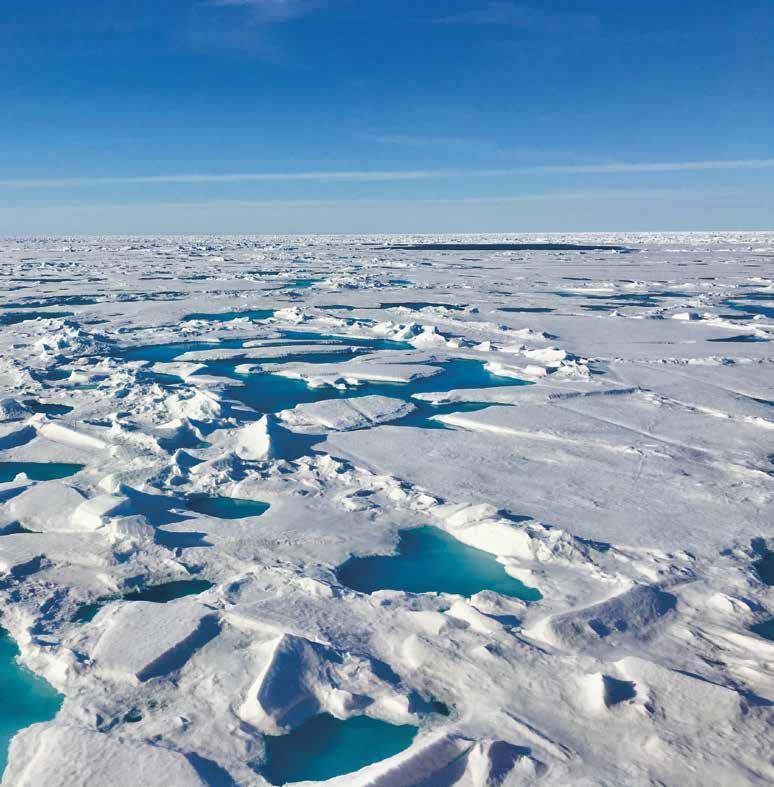
Day 1 Fly from Paris to Longyearbyen. Embark Le Commandant Charcot
Day 2 At Sea along the Spitsbergen Coast
Days 3-7 Navigating through the sea ice
Day 8 Geographic North Pole
Day 9-13 Navigating through the sea ice
Days 14-15 Sailing the Spitsbergen Coast
Day 15 Trip ends in Longyearbyen. Fly to Paris
Optional activities Kayaking Polar plunge Snowshoeing Hiking




Undertake the ultimate once-in-a lifetime expedition to the icy Narnia-esque landscapes of ‘The Great White Continent’.
Antarctica’s otherworldly landscapes have captured traveller’s imaginations since American explorer John Davis first stepped foot on this ice-capped land mass just over 200 years ago. Here is a slice of the Earth untouched by civilisation, where it’s not brick buildings that tower above you, but icebergs. Where soul-healing silence reigns and you can glimpse whale flukes slipping quietly beneath the water’s surface. Seals glide between the ice and penguins shuffle up and down their penguin highways. Read on to discover the voyages to Antarctica for 2025/26.
Opt for an expedition to take in the magical Antarctic Peninsula, or expand your bucketlist trip to include the wildlife-filled islands of South Georgia or the Falklands. Whichever you choose, you’re guaranteed a trip unlike any other.
For our complete range of polar journeys to one of the last frontiers of exploration, visit our website at explore.co.uk/polar

Classic Antarctica Page 62–63
Visit vast penguin colonies, learn the history of early explorers and look out for seals lazing on ice floes as you head out on Zodiacs.

Antarctic Circle Page 64
Cross the geographical milestone of the Antarctic Circle and discover the prolific wildlife of this region. Join a Citizen Science project and let your voyage contribute to vital polar research.
Antarctic Peninsula Argentina

Falklands, South Georgia and Antarctica
Page 66
Follow in Shackleton’s footsteps and voyage to the Antarctic Peninsula and the sub-antarctic Islands on this epic voyage.

Classic Antarctica Fly & Cruise
Avoid the Drake Passage by flying into King George Island before embarking on an epic journey along the western side of the Antarctic Peninsula. explore.co.uk/MECA

In Shackleton’s Footsteps
Follow the path of the greats as you sail from where Shackleton’s ship sank in the Weddell Sea to his safe haven in South Georgia. explore.co.uk/GMSF

Antarctic Peninsula & Weddell Sea
Page 65
Year-round sea ice and tabular icebergs dominate the waters of the Arctic Peninsula. Cut through and head deep into the peninsula on this adventurous expedition.
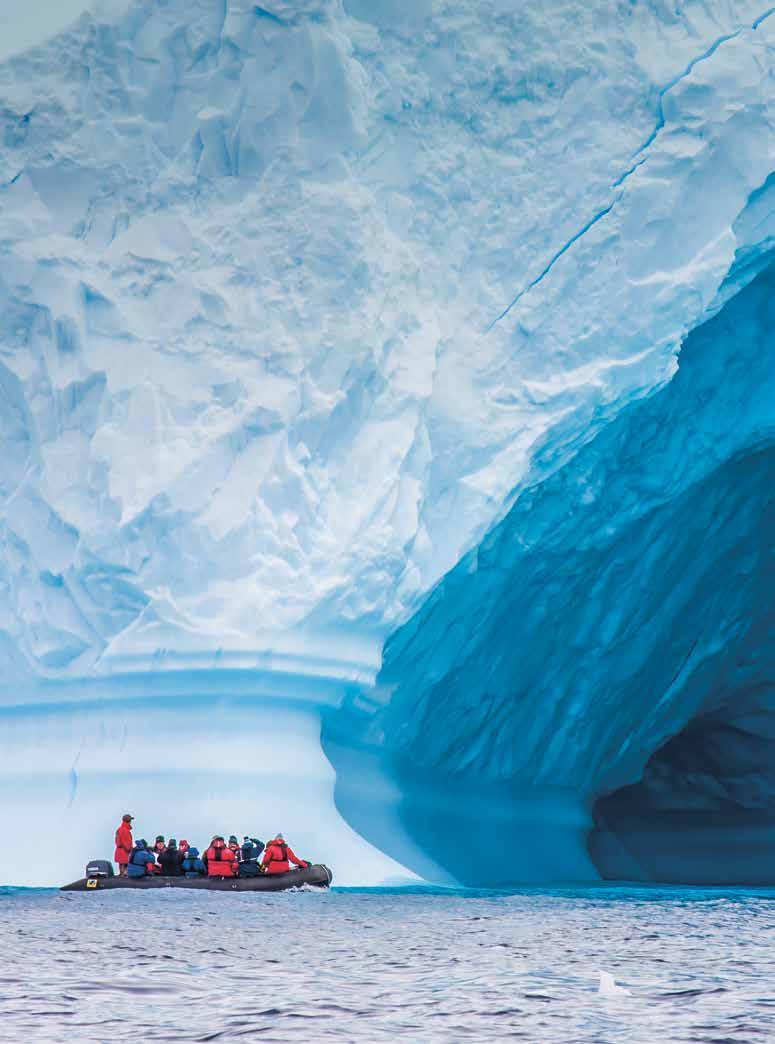

An expedition to Antarctica is a trip unlike any other, with remote scenery, distinctive wildlife and gourmet food on board your small ship. Find out what to expect from your Antarctic voyage.
Visit early in the season to see penguins building their nests, or if you want to see chicks, time your visit for around December and January. Later in the season the fluffy chicks are starting to walk, adding much more noise to the bustling rookeries. You’ll likely see many types of seals and seabirds no matter when you visit. Go later in the season to spot whales, as they’ll be in the area for feeding.

The weather in Antarctica is changeable and at times unpredictable, often quickly changing between grey skies and blue. Earlier in the season it’s colder and you’re more likely to experience snow and be rewarded with snowy landscapes and large icebergs. Later in the season the snow is melting off, making it a little easier underfoot at landing sites, and as temperatures increase, elegant ice-shapes emerge in the water and penguin chicks become even more playful.

Visitors are treated to a true remote wilderness with no civilisation in sight.

Unlike pretty much anywhere else in the world, Antarctica has no local people or communities. As a result, visitors are treated to a true remote wilderness with no civilisation in sight, other than the occasional hut used for research by scientists, or shipwrecks from historic whaling times. To go as far south as you can go for real remoteness, join a voyage to cross the Antarctic Circle later in the season when sea ice allows, or join a trip through the gleaming pack ice of the historic Ross Sea.
No matter which Antarctic trip you join, you’re guaranteed delicious and nourishing food on board. Substantial breakfasts and lunches set you up for a day’s exploring, while sit-down dinners offer a sophisticated treat as evening arrives. And with freshly-made biscuits and cakes when you return from landings, you’ll never go hungry. Gourmet chefs use ingredients that are sourced as locally as possible and can cater for any dietary requirements, just let us know in advance.


62 Classic Antarctica
64 Antarctic Circle
65 Antarctic Peninsula and Weddell Sea
66 Antarctica, Falklands and South Georgia
68 NEW Emperor Penguins of the Weddell Sea
70 NEW Ross Sea Odyssey
71 Antarctic Extensions

These are just some of our Antarctic trips. To see them all, go to explore.co.uk/antarctica

Trip
Voyage to Antarctica aboard the Sylvia Earle, accompanied by expert naturalist guides. Set foot on the Antarctic Peninsula and visit vast penguin colonies and learn the history of early explorers. During trips out by Zodiac boat, spot seals lazing on ice floes and the flukes of humpback whales.
It can be argued that the wilderness of the South Shetland Islands and the Antarctic Peninsula is the most spectacular on the planet. From its snowcapped mountains and blue, pristine icebergs, no other view compares. Orca and minke whales hunt in the icy bays and we have viewpoints from aboard the ship and on our landings, with
naturalists on hand to share their expert knowledge. Adelie, gentoo and chinstrap penguin rookeries are unforgettable against the backdrop of the vast, ice-sculpted continent. Expect towering cliffs of ice, mirror-still bodies of water and a true wild expedition as the ship’s captain navigates through the ice.
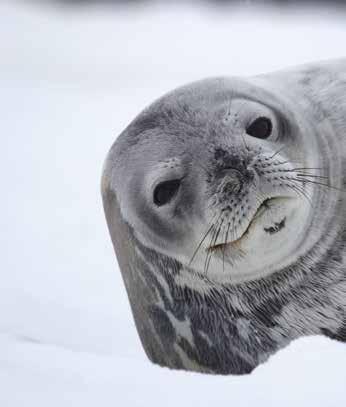
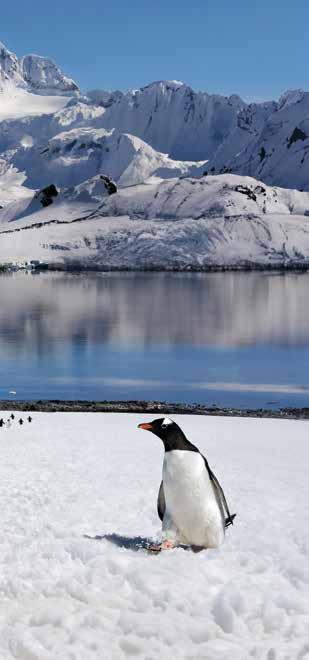
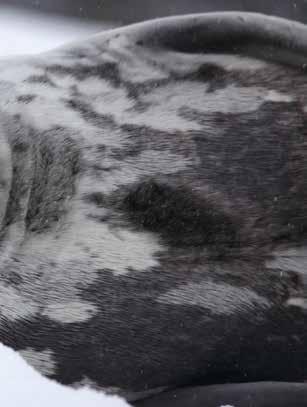
Zodiac-cruise amongst elegant ice shapes and experience stepping foot on the 7th continent.
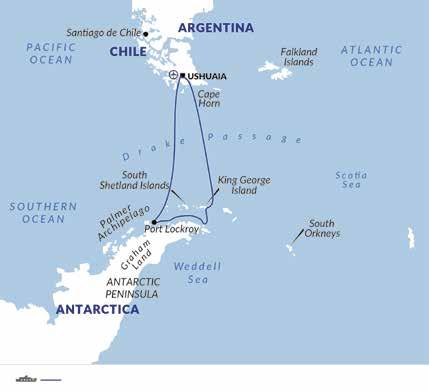
Duration: 12 days
Ship: M/V Sylvia Earle
Depart: November – March
Prices from: £11,669pp (trip only)
Carbon footprint: 3,343kg CO2e (average pp) Optional activities
Itinerary
Day 1 Join trip in Ushuaia
Day 2 Embark on the M/V Sylvia Earle
Days 3–4 Drake Passage
Days 5-9 Antarctic Peninsula
Days 10–11 Drake Passage
Day 12 Trip ends in Ushuaia
Find out more explore.co.uk/SEAP

This itinerary also operates on the M/V Greg Mortimer explore.co.uk/GMAP
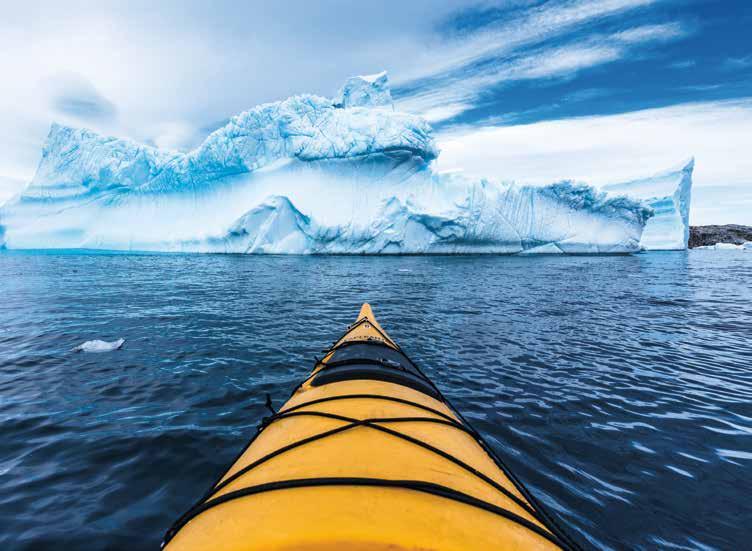
Trip
Take a voyage to the southernmost region on Earth, deep into the Antarctic Peninsula and across the Antarctic Circle. Join wildlife experts on board the Sylvia Earle in search of penguins, seals and whales, and celebrate with your fellow passengers as you reach 66°33’ S.
Duration: 13 days
Ship: M/V Sylvia Earle
Depart: December –January
Prices from: £12,619pp (trip only)
Carbon footprint: 3348kg CO2e (average pp)
Day 1 Join trip in Ushuaia
Day 2 Embark on the M/V Sylvia Earle
Days 3-4
Days 5-10
Days 11-12
Drake Passage
Antarctic Peninsula
Drake Passage
Day 13 Trip ends in Ushuaia
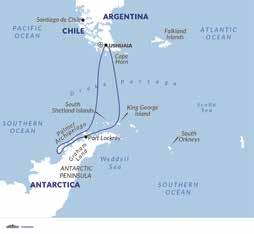
Optional activities
Snorkelling
Day kayak Polar plunge
Find out more explore.co.uk/SEPC

This itinerary also operates on the M/V Greg Mortimer explore.co.uk/GMPC
Search for feeding whales and hunting seals as you journey from the Antarctic Peninsula to the Weddell Sea, known for its remarkable tabular icebergs.
Giant petrels and albatrosses follow our ship as we head across the Drake Passage to the South Shetland Islands and onward, to the tip of the Antarctic Peninsula. The moment you catch sight of your first, soaring iceberg, will stay with you forever and the floating ice sculptures will mark your arrival below the Antarctic Convergence. Each day, we’ll take landings or Zodiac excursions to ice cliffs, among grounded icebergs and to
penguin rookeries and pebbly beaches. Keep your eyes peeled for whales as they feed and learn more about them from on-board naturalists, with lectures on sailing days to enrich your knowledge of the region. History fans will relish learning about the bold explorers who ventured here, including Ernest Shackleton whose ship Endurance still lies beneath the waves of the Weddell Sea.
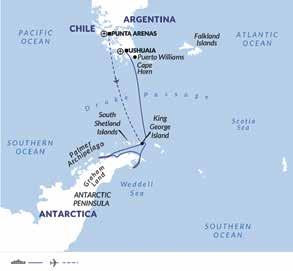
Duration: 13 days
Ship: M/V Sylvia Earle
Depart: February – March
Prices from: £14,310pp (trip only)
Carbon footprint: 3,035kg CO2e (average pp)

Optional activities
Kayaking Day kayak Polar plunge Snorkelling Scuba Diving
Day 1 Join trip in Punta Arenas
Day 2 Fly to King George Island. Embark on the M/V Sylvia Earle
Days 3-10 Weddell Sea and Antarctic Peninsula
Days 11-12 Drake Passage
Day 13 Trip ends in Ushuaia
Find out more
explore.co.uk/SEWA

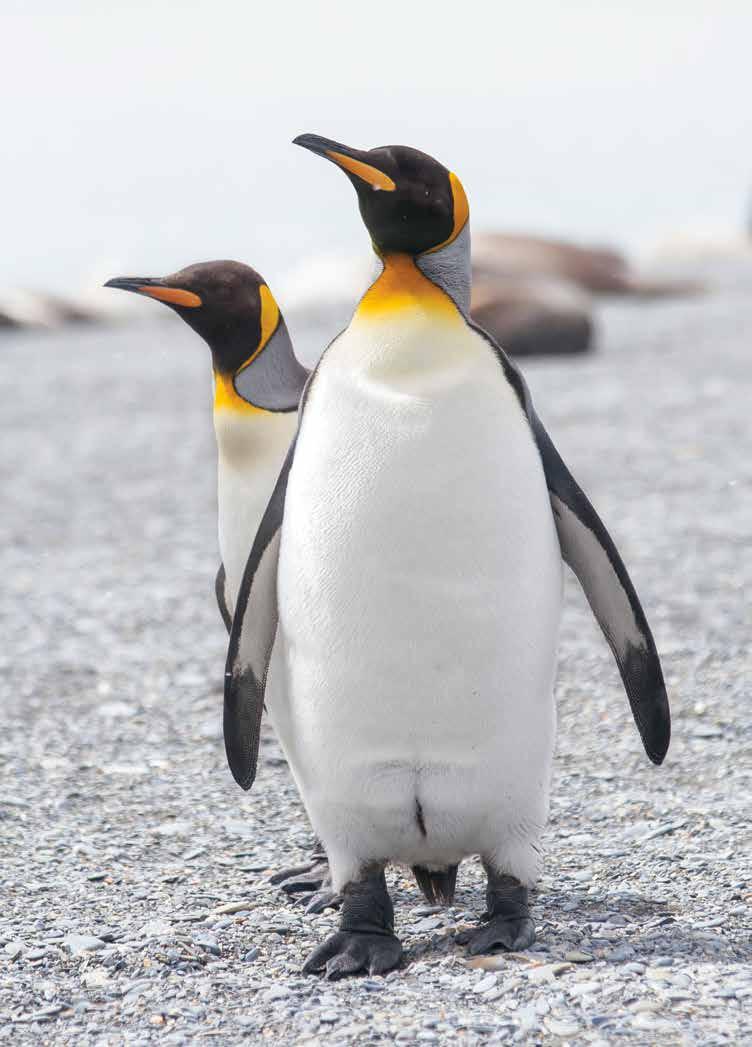
Visit one of the largest king penguin colonies on Earth.
Take an epic voyage to the Antarctic Peninsula and the Sub-Antarctic Islands. Follow in Shackleton’s footsteps in South Georgia, visiting one of the largest king penguin colonies on Earth, watching fur and elephant seals on the beaches and learning the history of the whaling stations.
Like Roald Amundsen and other great men of the Heroic Age of Antarctic Exploration, Sir Ernest Shackleton spent much of his life in pursuit of answers to the mysteries of the South Pole. His passion was ignited in 1901 when he sailed aboard the ship of Captain Robert Falcon Scott. By 1907, Shackleton was leading his own expeditions, first on the Nimrod and then, in 1914, aboard the ill-fated Endurance
The mission to cross from the Weddell Sea to the Ross Sea proved impossible. Endurance became locked in ice in January 1915 and over nine months, the elements crushed it. Camping on an ice drift, the 28 men were soon forced to take their boats into dangerous conditions. We follow their path, first journeying to Elephant Island and then the 715 nautical miles to South Georgia.

Duration: 21 days
Ship: M/V Greg Mortimer
Depart: November – March
Prices from: £19,025pp (trip only)
Carbon footprint: 5,961kg CO2e (average pp)

Kayaking Snowshoeing Polar plunge
Camping Shackleton Crossing by Ski
Day 1 Join trip in Ushuaia
Day 2 Embark on the M/V Greg Mortimer
Days 3-4 Drake Passage and South Shetland Islands
Days 5-7 Antarctic Peninsula
Day 8 Elephant Island
Days 9-10 Scotia Sea
Days 11-15 South Georgia
Days 16-17 At Sea
Days 18-19 Falklands
Day 20 At Sea
Day 21 Trip ends in Ushuaia

This itinerary also operates on the M/V Sylvia Earle explore.co.uk/SEFS
The seemingly endless frozen desert of Antarctica may appear, at first glance, a barren landscape but you’ll soon discover abundant life on this adventure. Sailing the Weddell Sea is one of the planet’s greatest expeditions and from aboard Le Commandant Charcot, we’ll follow history’s greatest explorers to see majestic, endemic emperor penguins in their icy home.
From the wind and waves of the famous Drake Passage, we sail into the Weddell Sea, just like the Golden Age explorers did before us. Ice floes stretch as far as the eye can see and gigantic tabular icebergs create an otherworldly landscape. It’s ace that forms the backdrop to Adélie penguin colonies where the fascinating birds have adapted to the elements to survive in the wild expanse. On this adventure, we set
our sights on the majestic emperor penguins, among the largest in the world. It’s rare to see their elegance in person but when you do, you never forget the touching experience. Seals and whales are commonly seen in the waters of the Weddell Sea and the expert naturalists aboard Le Commandant Charcot help enhance our understanding of their behaviour from the ship’s many wildlife-watching vantage points.
It’s rare to see their elegance in person but when you do, you never forget the touching experience.

Duration: 14 days
Ship: Le Commandant Charcot
Depart: October – November
Prices from: £20,220pp (trip only)
Carbon footprint: 3,982kg CO2e (average pp)

Day 1 Join trip in Santiago
Day 2 Fly to Ushuaia. Embark Le Commandant Charcot
Days 3-4 Crossing the Drake Passage
Day 5 Discover the North Antarctic Peninsula
Days 6-11 Explore the Weddell Sea
Days 12-13 Cross the Drake Passage
Day 14 Disembark in Ushuaia and fly to Santiago. Trip ends in Santiago
Optional activities
Kayaking
Snowshoeing
Hiking
Polar plunge


Trip
This odyssey into one of the deep south’s most historic sectors, takes us from the rata forests and megaherb moors of the sub-Antarctic, across the Antarctic Circle to the world’s largest floating ice shelf. Aboard the brand new Douglas Mawson expedition ship you’ll follow in the path of the Heroic Age explorers, keeping watch for emperor and Adélie penguins, patrolling orcas and snow petrels.
Duration: 25 days
Ship: Douglas Mawson
Depart: January
Prices from: £25,330pp (trip only)
Itinerary
Day 1 Join trip in Dunedin
Day 2
Carbon footprint: 6,290kg CO2e (average pp) Optional
Embark the Douglas Mawson
Day 3 At Sea
Days 4-6
New Zealand’s Sub-Antarctic Islands
Days 7-10 At Sea
Days 11-17 Victoria Land Coast and the Ross Sea
Days 18-20 At Sea
Days 21-22 Macquarie Island
Days 23-24 At Sea
Day 25 Trip ends in Dunedin

Have you decided on your Antarctica trip but would like to make the most of travelling via Latin America? Why not add a couple of days at the start or end of your polar voyage and extend your adventure to the Southern Cone. The south of Latin America offers a wide range of unique experiences; discover breathtaking wonders of nature, immerse yourself in the diverse cultures, their history and spice up your trip by discovering the countries culinary treats.
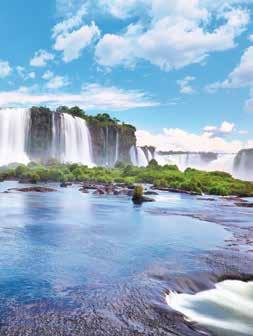
Cascading down the Iguazu River, the Iguazu Falls, one of the Seven Wonders of the Natural World, are situated on the border of Brazil and Argentina. The river emerges from thick jungle only for its wealth of water to crash down in one of the most dramatic displays of nature’s beauty and power. The sheer height and thundering noise of the water will take your breath away.
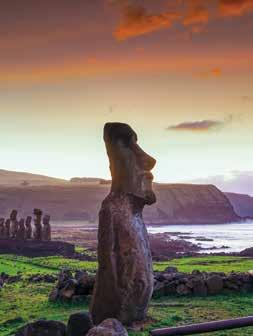
Easter Island is the most remote inhabited island in the world. Isolated in the Pacific Ocean, much of the island is classified as a UNESCO World Heritage Site and is famous for its archaeological sites. Visit the island to learn more about its unique history and discover the moai, almost 900 mysterious monoliths carved by the Rapa Nui people. Look up at the massive heads and marvel at the creative and physical feat of the inhabitants who built them.

Slip beneath the skin of Chile’s two main cities, the museum-rich capital of Santiago and the rainbowcoloured port city of Valparaiso, home to beloved poet Pablo Neruda. This deep dive will have you sipping pisco sours on the best rooftop bars, marvelling at the Pre-Columbian Museum’s 7,000-year-old Chinchorro mummies, quaffing wine in a boutique vineyard of the Casablanca Valley, and riding the old elevators and trolleybuses of ‘The Jewel of the Pacific.’

In the eastern foothills of the Andes, Mendoza is at the heart of South America’s largest wine-producing area. The famous Malbec wines originate from Mendoza’s high-altitude wine regions Lujan de Cuyo and the Uco Valley. Enjoy a fine food tour around the region’s many wineries (bodegas) and clink glasses while staying at a traditional estancia (a working cattle ranch) with the majestic Andes Mountains as a backdrop.
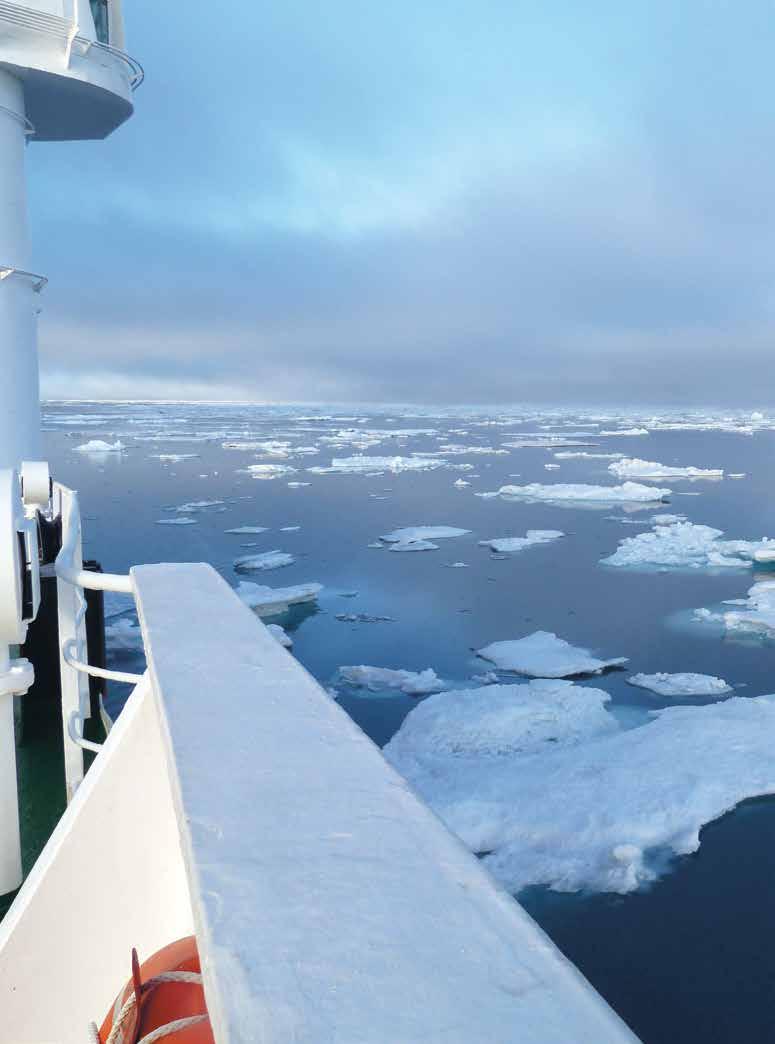
Like the great explorers of the past, the only real way to discover the polar regions is by expedition ship – with the added bonus of far more comfort and sumptuous suppers. Ours also use state-of-the-art hybrid technology to reduce the ecological footprint.

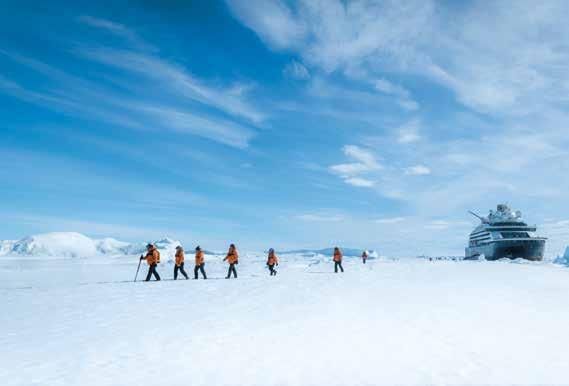
A chance occurrence can turn an already extraordinary adventure into something words simply cannot describe, a precious personal moment between you and nature.
The polar summer welcomes new boats, including the luxurious and revolutionary Le Commandant Charcot –the world’s first hybrid passenger ship to run on liquified natural gas. Fitted with a Polar Class 2, ice-strengthened hull, that allows the ship to sail between the sheets of drift ice and into the most remote regions (see page 80 for more). Indeed, all of our ships host fewer passengers, so there’s no waiting for the Zodiacs that zip you to and from the onshore action. Meaning, you’ll never miss the puff of mist from a surfacing whale, the waddling antics of penguins and perhaps even a glance of a silvery leopard seal.
Each element stacks on the last, to create an informed and enriching adventure. A team of expert biologists, glaciologists, geologists and naturalists offer lectures and insights into the wildlife and landscapes – from the way ice calves from glaciers to the feeding habits of blue whales – so passengers can interact
with both on a deeper level. And on our ships, you don’t just hear about their research and conservation efforts, you’re invited to join in with their important work – whether it’s tracking the speed of a whale, assessing beach litter to identify its origin, or combating ocean pollution, hands-on.
A huge amount of heart and skill also goes into the onboard culinary experience (see page 18), which so often provides the social icing for guests, on this ship-shaped cake, as you gather for top-notch meals to reflect on the day with fellow adventurers.
Plus, with private balconies, a panoramic viewing deck and glass-filled lounges, all our ships provide multiple windows onto these wintery wonderlands, so you can be sipping a cocktail while migrating seabirds fly by, or spying a pod of orcas while reading in the library. Each moment, a chance occurrence that can turn an already extraordinary adventure, into a precious personal moment between you and nature.
It’s important that you choose the right expedition vessel for your journey to the Arctic or Antarctica. Explore has done the work for you and hand-picked a selection of ships that will take you to see the very best of the polar regions.

Most of our ships carry between 65–130 passengers and none of our vessels are over 200 in capacity. This means you can join every excursion and more shore landings are possible. You’ll spend less time waiting to board Zodiacs, so you spend more time off the ship discovering the landscapes and wildlife. Smaller ships are more manoeuvrable, getting you much closer to the shoreline. You can also enjoy extra kayaking and camping activities with a small group of people. A low staff-to-passenger ratio means more one-on-one time with your expert expedition team.
You spend more time off the ship discovering the landscapes and wildlife.
All itineraries are designed to be adaptable to changing weather or sea ice or unexpected wildlife encounters. No matter where you are, the ships encourage a true sense of exploration. The crew are always looking for new places to explore by Zodiac and will adjust the schedule to make sure you get the most out of your expedition.
The crew are always looking for new places to explore.
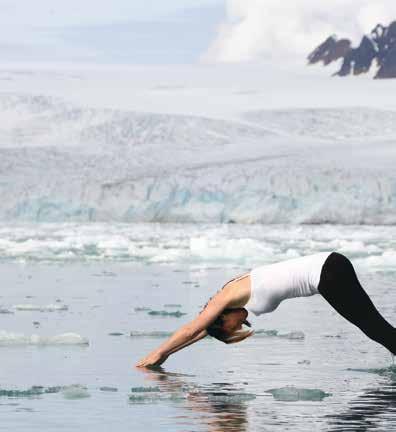
Built to world-class polar standards, all ships have been designed in close consultation with expedition specialists and are capable of negotiating the strongest winds and waves (even the notoriously famous Drake Passage). All the ships also have ice-strengthened hulls, enabling them to manoeuvre safely in the ice.



All of the ships are comfortable and sensibly kitted out for expedition voyages in polar conditions. Whichever ship you choose, you will enjoy a warm, friendly atmosphere on board –and the chance to witness some of nature’s most extraordinary sights up-close, thanks to plenty of dedicated observation spaces.
Life on board is relaxed and informal, which means you’ll receive a more personalised service.

The ships are captained and crewed by some of the top experts in their field. They love sharing tales of adventure with fellow like-minded people who love to connect with the natural world. Life on board is relaxed and informal, which means you’ll receive a more personalised service from the expert guides and they will ensure your time spent with them is interesting and educational.
From the remote historical islands of Antarctica to the far north of the Arctic, the Greg Mortimer is the perfect vessel from which to explore the polar regions.
Length: 104.4m
Breadth: 18.2m
Draught: 5.3m
Ice Class: 1A
Featuring revolutionary design and technology, the Greg Mortimer is purpose-built to voyage some of the most remote and rugged destinations on Earth. The unique streamlined bow slices smoothly through swell, meaning you’ll feel fewer vibrations from the icy waves. The cutting-edge dynamic stabilisers also provide fantastic stability as you cross the ocean, while also reducing fuel consumption. Your greatest adventures will launch from four dedicated Zodiac launching platforms, sending you right to the heart of the polar regions safely and efficiently. You’ll also find an activity platform for thrilling add-ons, such as kayaking, diving and ski touring. Whether you’re paddling past majestic glaciers or simply admiring unrivalled views from dedicated vantage points, you’ll remember every moment on board the Greg Mortimer
Through Citizen Science projects you’ll be immersed in the biodiversity of the region both on and off the ship. Take part in surveys and listen to lectures by experts, naturalists and expedition leaders. From climate change to biology, these presentations will educate and entertain you throughout the journey. During your downtime, head to the on-board library to read up on the history of the Antarctic and Arctic regions, or simply watch the landscape pass by. For a healthy dose of wellness visit the on-board Wellness Centre, featuring a gym, sauna and spa, all with serene views out to sea. Meanwhile, for avid photographers, the multimedia room provides a space to admire and edit your photos after an unforgettable day of exploration.
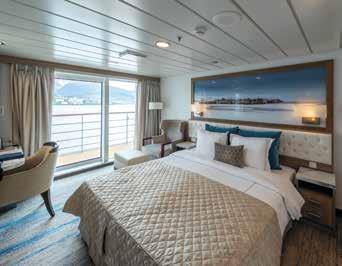
Passengers: 130
Staff and crew: 61
Cruising speed: 12 knots
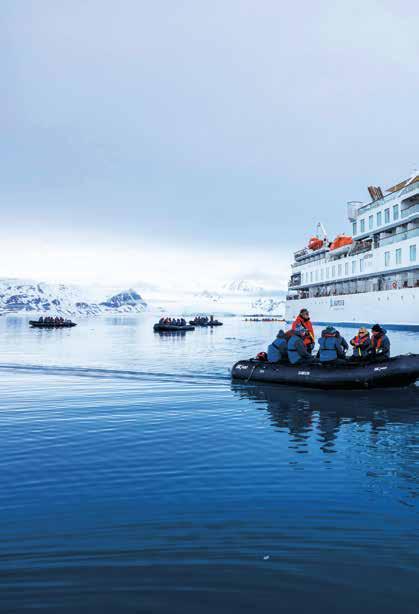

STATEROOM TRIPLE: Single beds, porthole, en suite facilities.
STATEROOM: Twin or double bed, porthole, en suite facilities.
BALCONY STATEROOM (A-C CABIN TYPES): Twin or double bed, private balcony, window, en suite facilities.
BALCONY STATEROOM SUPERIOR:
JUNIOR SUITE:

Launched in 2021, this magnificent, small vessel made the headlines for several reasons, not least because it was the first luxury hybrid electric polar exploration ship to be powered by liquified natural gas, but also, because it was the world’s first Polar Class (PC2) passenger icebreaker vessel – a build that means it can visit extreme latitudes that other commercial ships are unable to reach.
Length: 150m
Breadth: 28m
Draught: 10m
Ice class: PC2
Passengers: 200
Staff and crew: 215
Cruising speed: 15 knots


Since then, it has also earnt a reputation for providing its guests with one of the most luxurious cruises to the polar regions. Its 123 refined suites and staterooms, all with a private balcony or terrace, are spacious and beautifully decorated in soft muted tones, gentle blues, which makes spending time there a pleasure.
The elegant décor continues through to the common areas.
The two restaurants – Sila and the more formal Nuna – offer a wide range of cooked-to-perfection dining options created by the Michelin-starred chef Alain Ducasse, served with rate-inclusive wine and champagne.
In between meal and tea-times, guests can get to know their fellow passengers at numerous activities, such as yoga and stretching classes, films, lectures given by experts in their field, and post-dinner live music entertainment, while those seeking quieter activities can head to the Observatory Lounge, where there are games and a well-stocked library.
Relaxation is key, and Le Commandant Charcot excels, here, too. There is a wellness centre with a superb spa an indoor swimming pool, massage rooms, sauna and a snow room.
All this, and some of the most extraordinary landscapes and wildlife in the world to explore by Zodiac. Who could ask for more?
Each of the common areas have been designed with discreet luxury and have been carefully planned so that all spaces are open to the extraordinary polar landscapes and scenery. There are eight cabin types available, ranging from Stateroom cabins to the Owner’s Suite, all providing en-suite facilities, spacious comfort and balconies to enjoy the passing views. The wellness area offers a variety of treatments and guests can enjoy these fabulous facilities over the sea days, or after a busy day of exploration.
The restaurants offer a wide range of cooked-to-perfection dining options created by the world-renowned chef Alain Ducasse.


Whether you’re looking for the best viewing opportunities with the utmost comfort, or would like to get hands-on science experiences, discover the best ships for a polar voyage.

Antarctica
Explore is delighted to introduce a new vessel, the Douglas Mawson, which will be making its first sailings in 2025. Named after the legendary Australian explorer, the ship is built for adventure and will be the carrier for new voyages, including SubAntarctic discovery. It has capacity for 154 passengers, but limits numbers to just 130 on board for its expeditions, with dedicated single cabins available. On board, guests will find an extensive range of amenities and services, including a heated outdoor pool, two Jacuzzis, a gym, sauna, two restaurants and a Citizen Science Centre. Talks from experts, films, live entertainment and much more make the days at sea fly by, and encourage conversations between shipmates, who embark as strangers and disembark as friends.
M/V Ushuaia
Small traditional expedition ship
Antarctica
Having been continuously modernised over eight years, the M/V Ushuaia is a fantastic small traditional expedition ship for up to 90 passengers per sailing. Due to the intimate size of this ship, all passengers can disembark at the same time, meaning you’ll enjoy longer landings on shore. From the ice-strengthened exterior to the ample deck space for witnessing unforgettable wildlife moments, this vessel boasts everything you need to explore Antarctica. Thanks to a knowledgeable team of naturalists, historians and geologists on board, you’ll get to know the heart of this region while also learning how to protect it.

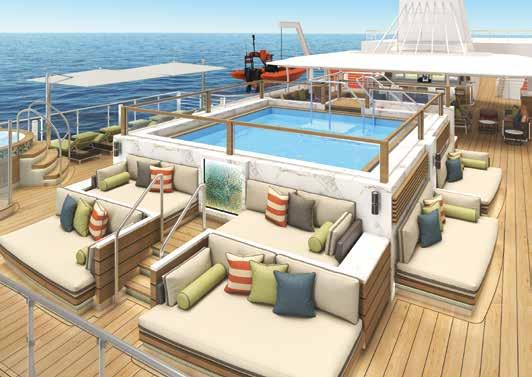
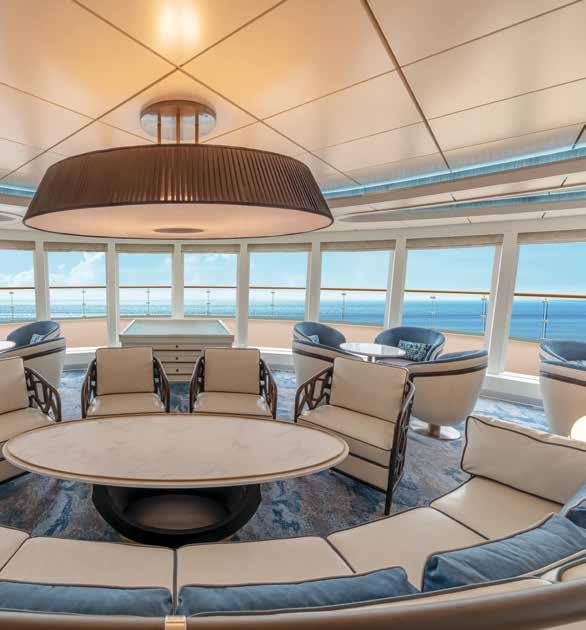
M/V Ocean Nova Exclusive Fly and Cruise format + dedicated single cabins
Antarctica
The M/V Ocean Nova is a fantastic expedition ship, renowned for her exclusive Fly and Cruise combination format, as well as her dedicated single cabins and small-ship experience. With capacity for up to 67 passengers, solo travellers will enjoy their own cabins throughout their Antarctic voyage, complete with a sea view and private facilities. Elsewhere on board, you’ll find spacious observation decks, as well as a panoramic lounge, offering stunning views of the passing scenery. Wherever you are on board the M/V Ocean Nova you’ll have the opportunity to witness unforgettable wildlife moments, whether out on deck, in your cabin, or in the 180-degree-view panoramic lounge.
M/V Sylvia Earle Glass-fronted atrium offering excellent viewing opportunities from inside the ship
Arctic and Antarctica
Launched in 2022, the M/V Sylvia Earle has been purpose-built for expedition travel, meeting world-class polar standards in the Arctic and Antarctica. With spacious stateroom cabins for up to 130 passengers, this ship boasts plenty of space to unwind during your time on board. A particular favourite of the Sylvia Earle is the glass-fronted atrium, offering unparalleled viewing opportunities from the comfort of the ship. Thanks to the unique bow design, space is created for windows close to the water, meaning you’ll get closer to the action than ever before. From whales breaching the surface of the water, to spectacular glaciers passing by, the atrium offers endless views of the glacial wilderness all around you.
Get to know the heart of the region while also learning how to protect it.

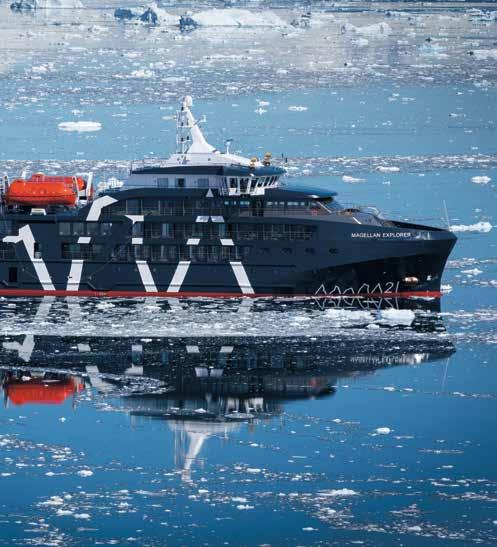
Arctic and Antarctica
With a total of 94 comfortable staterooms and suites, all with unobstructed sea view and many, with their own balcony, the Ocean Albatros allows you to explore the polar regions in supreme comfort. It offers two restaurants, a wellness area, an Albatros Nordic Bar and an open deck dining facility. Offering a lower carbon footprint than many traditional expedition vessels, it fits well into our portfolio of ships, implementing the Green Initiative Program, ensuring both sustainability and absolute comfort for all guests on board. The ship also offers a unique panorama sauna and dedicated solo cabins, without supplement.
Antarctica
A modern ship, the Magellan Explorer started service in the 2019 Antarctic season. It cleverly minimises its fuel consumption by recycling the heat produced by the engines to power the heating and hot water. With a maximum capacity of 76 guests, each cabin has its own individually-controlled heating, as well as heated floors in private bathrooms. In the communal areas, there’s state-ofthe-art audio-visual equipment for on-board learning, as well as a glass-enclosed observation lounge and a forward-facing observation deck leading to the ship’s bow, so you’re as close as possible to the action, when you’re wildlife-watching out on deck. For those looking to balance out their hearty meals with some exercise, there’s an on-board fitness centre too.


Find out more
You’ll find deck plans, photos and more detailed information about all of the ships on our website explore.co.uk/polarships

Please carefully read through the following information about booking an Explore Polar voyage.
When you book (whether by phone, travel agent or online), you will be asked to confirm that you have read and understood these pages, as well as our Trip Notes and Booking Conditions (www.explore.co.uk/booking-conditions).
The combination of travel services offered to you is a package within the meaning of the Package Travel and Linked Travel Arrangements Regulations. Therefore, you will benefit from all rights applying to packages. Explore will be fully responsible for the proper performance of the package as a whole.
Additionally, as required by UK law for bookings made in the UK and Europe, Explore has protection in place to refund your payments and, where transport is included in the package, to ensure your repatriation in the event that it becomes/they become insolvent.
More information on your key rights under the Package Travel and Linked Travel Arrangements Regulations 2018 can be found here: www.explore.co.uk/travel-regulations
Travelling on an Explore Polar voyage
Your fellow passengers could be from anywhere in the world. Voyages are conducted in English, so most passengers tend to be from the UK, Ireland, Australia, New Zealand, Canada or the US. These polar ships are not operated by Explore and are not exclusive to Explore customers. Everyone joining a polar trip arrives with slightly different expectations. The crew aim to ensure everyone’s expectations are met. Voyage itineraries may vary from the published itinerary due to weather and ice conditions. Where possible, the crew will stick to a schedule to ensure that it all works logistically. It gets us off to a great start if everyone arrives on time, so please be prompt when joining your trip.
The recommended minimum age on all of our expedition ships is 10 years old. Some ship operators will accept younger children, however 5 years old would be the absolute minimum and would depend on the individual ship operator. For our Churchill bears trips, the age is limited to a minimum of 12 years old. Under 18 year olds must be accompanied by a parent or guardian for all trips. We do not have a maximum age, however, we do recognise that at some point during our customers’ journey with us they will reach an age where we will have to review their fitness and ability to participate in the trips they’ve chosen to book. Should you be 80 or older at the time of travel, we will discuss the itinerary with you, before booking you on the trip and may ask you additional questions about your health and fitness.
Although high levels of fitness are not necessary for most activities on our polar trips, some physical participation from passengers is required, for example climbing into and out of the Zodiacs and short walks ashore. If in doubt, please discuss with one of our polar team. It is your responsibility to let us know if you have any concerns about your ability to participate. If you have any medical condition or disability which may affect your trip arrangements in any way, you must provide us with full details at the time of booking. Each passenger must fill in a medical questionnaire before the booking can be fully accepted by the ship operator.
On our Polar trips there will be water-based activities. For your personal safety and enjoyment, an ability to swim is therefore strongly recommended, if taking part in these activities.
Travel insurance and pre-existing medical conditions
Travel insurance is mandatory for all voyages. You must carry your insurance policy documents with you on the trip. Please ensure that your documentation shows you as the named policyholder and that the cover is valid for the entire period of travel. It must include cover for the polar regions as well as full cover to the value of your trip and indicate that you have cover for (at least) medical expenses and emergency repatriation in the event of illness or injury. Some operators will require you to upload proof of your cover onto your individual portal link before travel. Please ensure that a 24 hour contact telephone number for your insurance company is written on your documentation in case of an emergency. If you are unable to provide this information at the start of the trip you will not be able to continue with us unless you purchase a suitable insurance policy. If you, your travelling companions, or anyone upon whom your travel depends (such as a friend or family member) has a pre-existing medical condition, you must disclose this to your travel insurer’s medical screening helpline when you purchase your insurance policy. Failure to do so may result in your claim being declined. Please ensure that you receive written confirmation from your insurance provider that the
medical condition is covered. You must take this written confirmation with you on the trip in addition to the insurance policy itself. If you don’t, you may not have appropriate cover. We reserve the right to cancel your booking at any point if you do not fully insure your pre-existing medical condition. Please ensure that you tell us about any pre-existing medical conditions at the time of booking.
Itineraries
Polar voyage itineraries are best kept flexible: the weather or the ice conditions may require the captain to make itinerary changes. Itineraries can also be adjusted to take advantage of opportunities such as wildlife sightings. The maps provided are indicative only; each ship tends to follow its own preferred route, which will vary from one voyage to the next, depending on conditions. From time to time, some elements of the voyage may change from those that have been published. This could be the result of inclement weather, a change in the local political situation or other circumstances beyond our control. We will keep you as well informed as possible about these changes. Significant changes to your holiday will be notified as soon as we feasibly can. Minor amendments to your trip will be detailed on your final trip documentation, although our website will be regularly updated should you wish to check the information at any time. Flexibility is key on any polar voyage as the final landing sites will be dictated by the weather and ice conditions, as well as wildlife sightings.
Ship accommodation
Most cabins are based on two people sharing, however triples and quads are also available; some ships have a limited number of single cabins (see individual ship details). Double beds are available in some cabins, while most other cabins have twin beds. If you are travelling on your own you can choose to share a cabin with another solo traveller of the same sex (except on Le Commandant Charcot) or pay a supplement for sole occupancy of a cabin, if single cabins are unavailable. Single rooms are available on our Churchill Bears trips, but due to the limited accommodation in Churchill, availability is also limited. If you are booking onto our Churchill trips as a single traveller, our operator will try to match you in a twin share. We recommend booking early to avoid disappointment.
Onboard meals
All meals are included while on board and all the ships can cater for specific diets: please tell us about any dietary requirements when you make your booking.
Connecting flights and additional accommodation
You may require international flights or hotel accommodation before or after your voyage. This can be organised through Explore: when you make your enquiry, your polar specialist will be happy to look at options with you. If you are planning on making your own connecting flight arrangements we strongly recommend you book flights that are flexible and refundable. Due to the nature of our polar trips, days of operation and itineraries can change. It is important that you are able to amend your connecting travel arrangements, should the need arise. Also, in the event of a trip being cancelled (for whatever reason), it is important that you are able to get your flight cost refunded. We regret we cannot accept liability for any connecting travel arrangements you make (including any cancellation or amendment charges) in the event of changes to, or cancellation of, our polar trip.
Changes to flight information
When you book a flight-inclusive trip with Explore, your holiday confirmation will contain provisional flight details. The timings, flight numbers or route could change several times before departure. We will confirm final timings with your final documents. We will notify you immediately of any significant airline schedule change which occurs after your tickets have
been issued. We recommend that you defer booking any connecting travel to the airport or arrangements such as car parking or overnight hotels until you have received your final documents, with confirmed travel times. Where Explore is arranging domestic regional flights, these will be automatically rebooked to connect with your international flights. We strongly recommend that you do not purchase non-flexible, non-refundable connecting rail, air or bus tickets, as they usually incur cancellation or penalty charges in the event of a change to the departure time or date.
UK air safety list
In accordance with EU Directive (EC) No 2111/2005 Article 9, we are required to bring to your attention the existence of The UK Air Safety List which contains details of air carriers which are subject to an operating ban within the UK. The List is available for inspection at https://www.caa.co.uk/ media/5fwfpd4s/uk-air-safety-list-31-may-2023.pdf In accordance with EU Regulations we are required to advise you of the actual carrier(s) (or, if the actual carrier(s) is not known, the likely carrier(s) that will operate your international flight(s) to and from an EU airport at the time of booking. Where we are only able to inform you of the likely carrier(s) at the time of booking, we shall inform you of the identity of the actual carrier(s) as soon as we become aware of this. Any change to the operating carrier(s) after your booking has been confirmed will be notified to you as soon as possible. If the carrier with whom you have a confirmed reservation becomes subject to an operating ban and, as a result, we or the carrier are unable to offer you a suitable alternative, the provisions of our Booking Conditions “If we change your trip” will apply. Please note that we will not book our customers onto banned airlines whose flights may be available for general sale and accessible to the public.
Aircraft weight restrictions
For the purposes of flight safety, it is essential that you adhere to the luggage weight restrictions imposed by the airline you are flying with, particularly when flying on internal flights on smaller aircraft.
Preparing for your holiday
Travelling to far-flung corners of the earth involves adapting to living conditions that are often very different from your own. Please be prepared for unusual situations, local differences and unpredictable events. The very nature of adventure holidays means your most enjoyable moments are likely to come from the unexpected. You need to be sure you are happy to swap luxury for experience when joining an Explore trip. If you are someone who prefers things to go as planned and enjoys some pampering along the way, then maybe think twice about an adventure holiday. You should also be aware that some countries around the world have security problems. Unsavoury characters are likely to be active in big cities and street markets and certain areas may be considered ‘out-of-bounds’ for tourists. However, most crime is opportunistic. Using your common sense will reduce the risks. Unfortunately, no destination can be guaranteed to be safe from terrorism. We constantly monitor the political situation in the regions we visit and will re-route or cancel a trip if we feel it is necessary. While we endeavour to provide as much information as possible in our brochure and individual Trip Notes regarding the areas our trips travel to, we would always recommend that you undertake some background research about the places you will be visiting and the type of climate and local conditions you can expect in order to get the most from your holiday.
Foreign Commonwealth and Development Office (FCDO) Travel Advice Unit provides detailed information about your destination including current entry requirements. We strongly recommend that you read their comments about the country you are planning to visit, both when you book and again just
before you leave, and that you sign up to the government travel alert service. For the UK, the FCDO alert service can be found here: www.gov.uk/ foreign-travel-advice/email-signup. We monitor FCDO travel warnings and advice, and based on them, may cancel trips before departure, or re-route or make other changes to trips operating in or throughout the country concerned. Any decision we take about whether to operate or cancel a trip or make other changes will always be in the interests of your safety and security. We will make these decisions at least four weeks before departure, unless we believe that local conditions will improve before the start of the trip.
We’ve been named a Platinum Trusted Service Award Winner
These awards are based purely on independently-moderated feedback from customers via Feefo. It shows that we’re delivering time and again for our customers, placing customer service at the heart of what we do.
We’re proud that Explore is now a Certified B Corporation. As a Certified B Corp in the travel industry, we’re counted among businesses that are leading a global movement for an inclusive, equitable and regenerative economy.
Explore has met ethy’s standards for verified sustainability claims. By achieving ethy certification, Explore is demonstrating contribution to the UN Sustainable Development Goals and helping consumers make informed decisions. See our ethy ecolabels here: explore.co.uk/ethy

Explore is proud to be the first tour operator to be approved by Trading Standards.
Explore is a fully bonded Tour Operator licensed by the Civil Aviation Authority (CAA) and by ABTOT. We hold an Air Travel Organiser’s Licence issued by the Civil Aviation Authority (ATOL number 2595).
All the flights and flight-inclusive holidays* in this brochure or on our website are financially protected by the ATOL scheme. When you pay, you will be supplied with an ATOL Certificate. Please ask for it and check to ensure that everything you booked (flights, hotels and other services) is listed on it.
Please see our booking conditions for further information or for more information about financial protection and the ATOL Certificate go to www.atol.org.uk/ATOLCertificate.
*The flights and flight-inclusive holidays we arrange are ATOL protected providing they are made available in the UK.
The Association of Bonded Travel Organisers Trust Limited (ABTOT) provides financial protection under The Package Travel and Linked Travel Arrangements Regulations 2018 for Explore Worldwide Ltd, Member 5207 and in the event of their insolvency, protection is provided for:
ABTOT cover provides for a refund in the event you have not yet travelled or repatriation if transportation was included in your package. Please note that bookings made outside the UK are only protected by ABTOT when purchased directly with Explore Worldwide Ltd.
In the unlikely event that you require assistance whilst abroad due to our financial failure, please call our 24/7 helpline on 01702 811397 and advise you are a customer of an ABTOT protected travel company. You can access The Package Travel and Linked Travel Arrangements Regulations 2018 here: https://www. legislation.gov.uk/uksi/2018/634/contents/made
The prices shown in this brochure are for guidance only. Prices represent the basic per person cost of the trip at the time of publication of this brochure. The price at the time of booking may be different. The latest guide prices for each trip departure can be found on our website: www.explore.co.uk. The lead-in prices for our ship-based trips are usually based on quad or triple share. For our Churchill Bears trips, the lead-in price is based on twin share. Please contact our Polar Sales team to discuss cabin and room options.
What’s included in the price?
See individual Trip Notes for detail on what is included in each trip. Normally all meals, Zodiac and Polar Rover excursions, and on-shore walks and hikes are included, but other activities must be pre-arranged and an extra charge will be made. Drinks and items of a personal nature such as laundry are not included in the voyage price, except for drinks that are included at meal times. Tips for the crew are generally not included and are usually expected but are payable at the customer’s discretion.
What’s not included?
The price of the trip does not include: visa fees, vaccination charges, travel insurance premiums, passport costs, international departure taxes, excess baggage charges, optional tours and excursions, hotel porters or meals (other than those we list as included). We also do not include items of a personal nature; such as laundry, room service charges, drinks or phone calls. Tips for personal service are not included and are usually expected. If you book on trip/land only basis, we do not include flights from the UK or departure taxes.
Once we have confirmed your booking we guarantee the price of your confirmed services won’t change: we will not pass on surcharges of any kind. Unlike most other tour operators we will not pass on unexpected additional costs like fuel surcharges and tax increases.
Passport information
Please note it is your responsibility to ensure you have the correct, current information in good time before departure and that you act on it. Please ensure that you are in possession of a full passport, with the correct validity and appropriate number of blank pages for your chosen destination. Please note that passport information is subject to change at any time.
Visas
It is your responsibility to ensure you have the correct visas required for all countries that you will enter or pass thorough on your trip. Many countries require a visa to be obtained before travel or on arrival. A summary of requirements for British passport holders can be found on the individual Trip Notes but please note that visa and passport information is subject to change at any time. If required, visas can be obtained through a Visa Service or the relevant Embassy or Consular Office.
General Note
Some countries refuse admission to travellers not meeting their accepted standards of dress or appearance (even if they hold a visa). Entry may also be refused to some countries if your passport bears stamps or visas (valid or expired) from certain countries. Please bear this in mind when booking/
travelling to these destinations as it can negatively affect your future travel plans. Further information can be found on our Trip Notes where applicable.
Travcour
We have partnered with Travcour; a company who specialise in visa processing. Please visit their website to download visa application forms, follow links to important embassy websites or make general enquiries about their visa service. Please call 020 8543 1846 for more information or visit www.travcour.com.
Vaccinations
It is your responsibility to ensure you have the correct vaccinations required for all countries that you will visit on your trip. Explore Trip Notes detail the recommended vaccinations for each trip but you must consult with your doctor or a travel health clinic to ensure you have the most up to date advice.
Please note that some inoculation programmes require two injections, administered four weeks apart. You should leave plenty of time for this.
As a general rule, please note that health requirements and recommendations may change and you must check the current requirements in good time before departure.
Brochure / Website / Advertising material accuracy
The information contained in our brochure and website is believed to be correct at the time of printing or publication. However, errors may occasionally occur and information may subsequently change. You must therefore ensure you check all details of your chosen holiday (including the price) with us at the time of booking.
Thank you to all our Polar partners for supplying their images for use in this brochure.
Explore Worldwide Ltd.
Registered Office: Nelson House, 55 Victoria Road, Farnborough, Hampshire, GU14 7PA, UK.
VAT No. 358 7552 13.
Further information can be found at www.fitfortravel.nhs.uk. For country-specific advice http://nathnac.net is an excellent source of information on health risks.
Under 18 immigration guidance
Please note that some countries require proof of parental consent when travelling overseas with under 18s. Please check requirements with the relevant embassy or consular office well in advance of travel if this applies to your party.
Lone parents travelling with children
Single parents or other adults travelling alone with children should be aware that some countries require documentary evidence of parental responsibility before allowing lone parents to enter the country or, in some cases, before permitting the children to leave the country. For further information on exactly what will be required at immigration please contact the consulate of your destination country (this information can be found on the Foreign & Commonwealth Office website www.gov.uk/foreign-travel-advice).
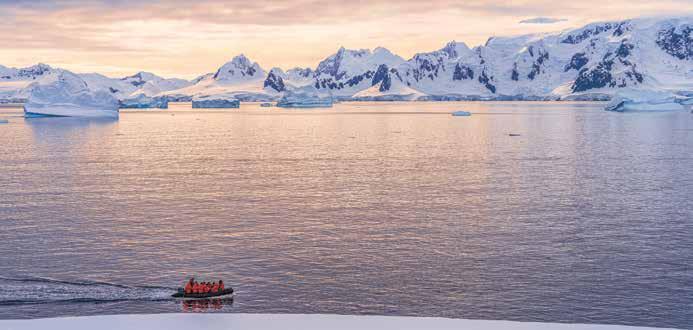
Explore takes your privacy extremely seriously. We are committed to doing everything we can to protect any personal information provided to us when you enquire about or book a holiday or another travel service with us, when you visit our website, or when you engage with us by other means. This equally applies if someone else makes arrangements on your behalf. For full details of what, why and how we collect and use your personal information, how we protect it and how you can contact us, see our online Privacy Centre at www.explore.co.uk/privacy-policy or call us on 01252 379438 so that we can send the details to you.
If you handle the arrangements for other travellers, please ensure they are aware of the information contained within our Privacy Centre and they consent to you acting on their behalf in your dealings with us.
To enable us to make holiday arrangements for you, we may ask you to provide information such as:
• your name, gender, date of birth, contact details;
• your preferred rooming arrangements and other special requests (including special categories of personal data such as dietary requirements, which may disclose health matters or your religious or philosophical beliefs, and information about any disability or medical condition which may affect the chosen holiday arrangements);
• the name and telephone number of an emergency contact person (whom we will only contact in urgent circumstances while you are away);
• your passport and travel insurance details;
• details of your payment card or your bank account (this information is processed using a third party payment services provider and is not stored by us);
• when you call us or correspond with us about your booking, we may record the call for training and quality control purposes and/or keep information on why you contacted us, and the advice we gave you;
• on your return from holiday we email or post a satisfaction questionnaire to you. This gives us specific feedback on any issue you may have experienced, and statistical data we can amalgamate in order to monitor the quality of our holidays.
We will need to share your data with third party service providers, used in the delivery of your purchased holiday arrangements, some of which may be based outside the EEA. These providers include accommodation, restaurants and transport providers; local ground partners and agents, where we use them; equipment hire operators, including our polar voyage partners and guides, tutors and local attractions where booked on your behalf.
We keep the information related to your booking for a period which enables us to handle or respond to any complaints or queries and to fulfil our obligations to our
third party suppliers who provided your holiday arrangements. The information may also be retained so that we can continue to improve your experience with us while you engage with and purchase from us.
By law we have to keep basic information about our customers for legal and tax purposes for up to 7 years after they cease being customers.
If you fail to provide personal information
Should you fail to provide data required either by law, or necessary to provide your chosen travel arrangements, we will not be able to provide the services you have booked or are attempting to book. This may result in Explore being unable to process your booking and be forced to cancel the booking. In this case, we will treat this as a ‘cancellation by you’ in accordance with the relevant Booking Terms & Conditions and notify you accordingly.
We may use your information to provide you with brochures, newsletters and other communications if you have provided your prior consent or we are permitted under an identified and assessed legitimate interest. We sell our holidays directly to customers and so sending out brochures and other marketing communications by post from timeto-time is very important to the way we do business. We use data we have collected from bookings, brochure requests and other forms of engagement to decide what marketing information our customers may like to receive, and we have identified this as in our legitimate interest.
We do provide an opportunity to opt-out of this direct marketing during the booking or enquiry process and in subsequent communications, or you may contact us at any time to do so. We have found over the years that the majority of people welcome these communications and, those who do not are happy to let us know so we can ensure no more are sent.
If you ask us to stop sending marketing information, you may continue to receive communications for up to 4 weeks after your requested change while our systems are fully updated.
From time-to-time, our staff, customers and suppliers may take photographs and video footage of trips in progress, including photos and video footage of our customers. You will be invited to sign a model release form to consent to this. These images may be used in future marketing materials and stored physically and digitally. If you do not wish to be filmed or for your picture to be taken or used in this manner, please advise your Expedition Leader and/or the photographer at the start of your trip.
Website use
In order for us to provide you with the optimum service, we use ‘Cookies’ on our website. Cookies are small text files sent to your computer when you access our site. Cookies used on our site are anonymous and contain no personal information, but do identify your computer so that you can navigate our site more easily and our website can remember your preferences. For more information about what cookies we use and how to manage them please refer to our Cookie Policy at www.explore.co.uk/privacy/ cookies.
us
It is important that the personal data we hold about you is accurate and current. Please keep us informed if any of the details you provide to us should change during the course of your relationship with us. If you need further assistance, would like to make a comment or update your marketing preferences, you can contact us:
• By telephone on 01252 379438
• By email: Dataprivacy@explore.co.uk
• By mail to Data Privacy Manager, Explore, Nelson House, 55 Victoria Road, Farnborough, Hampshire, GU14 7PA, UK.
You also have the right to make a complaint at any time to the Information Commissioner’s Office (ICO). You can contact them on 0303 123 1113 or go online to www.ico.org.uk/concerns.
